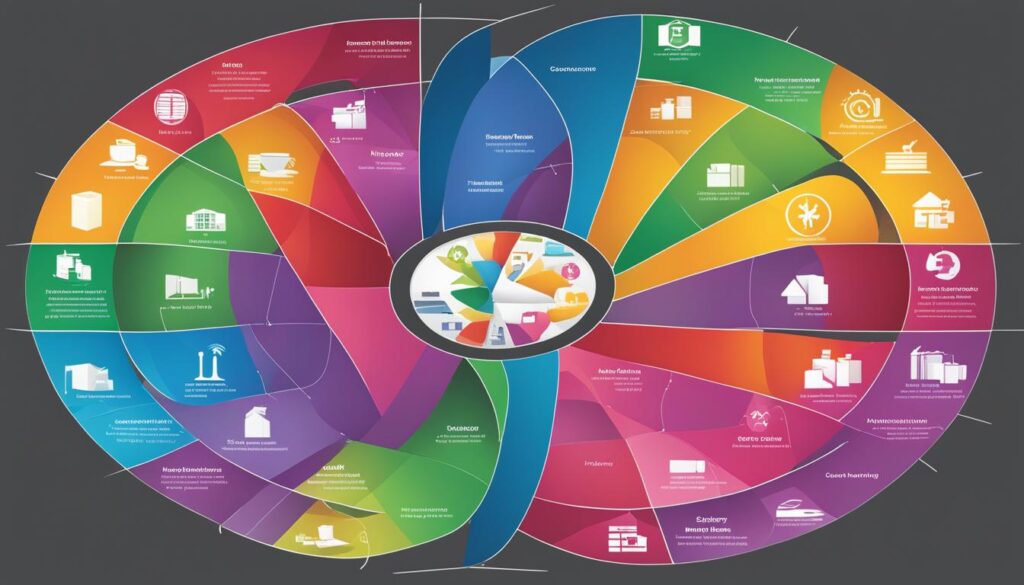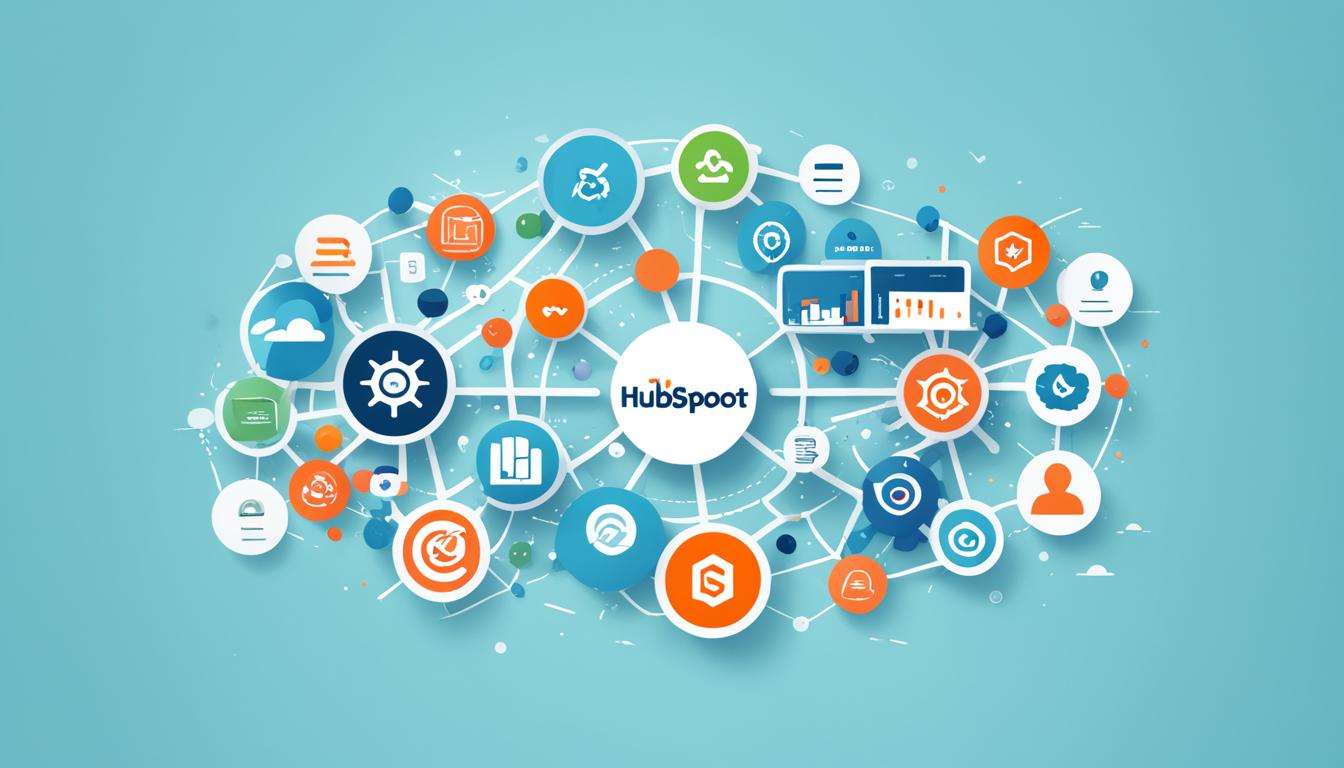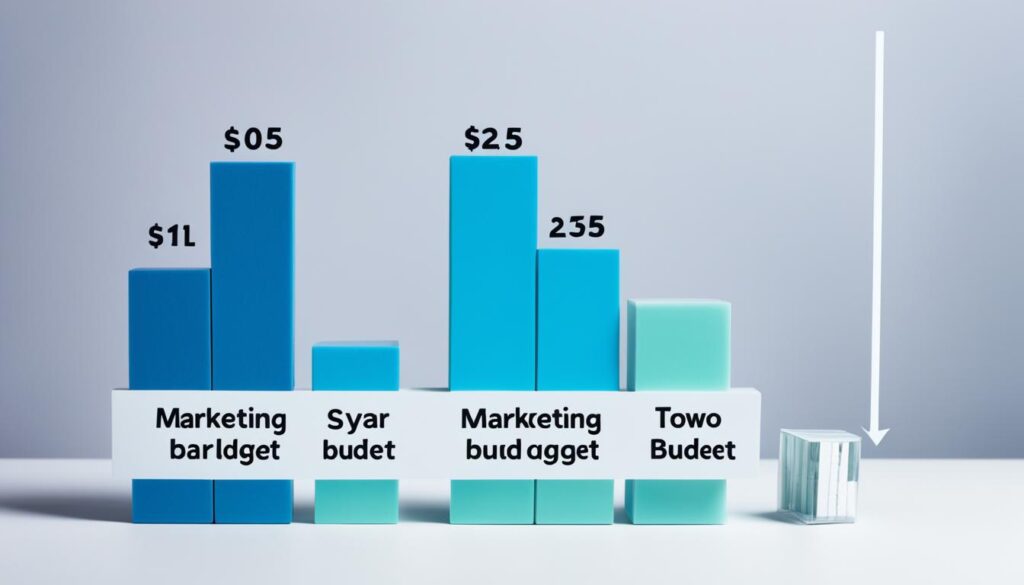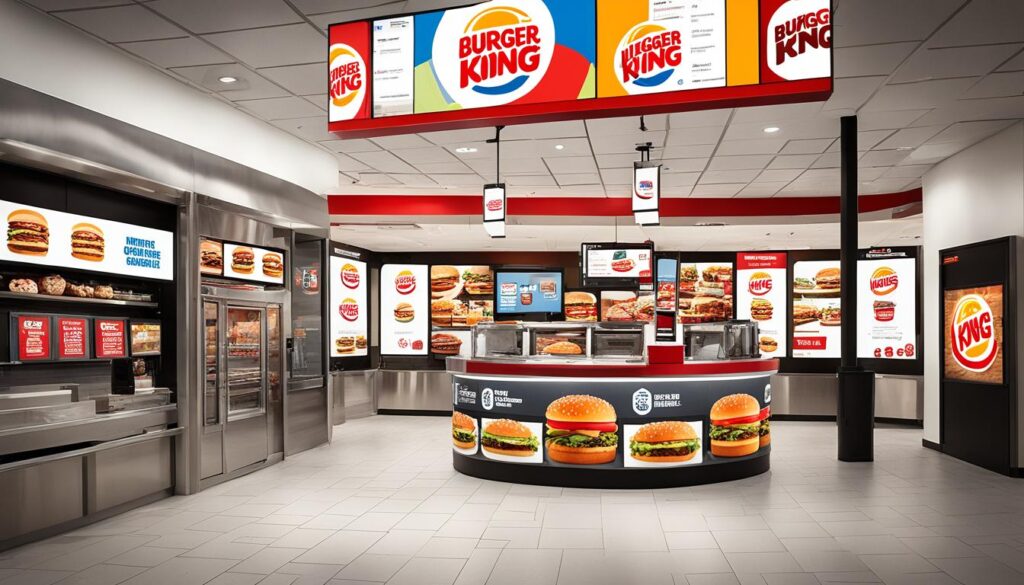Marketing Strategy
Effective Customer Segmentation Use Cases Revealed

Are you aware that companies successfully employing customer segmentation strategies witness a revenue surge of 760%?
Customer segmentation is a powerful strategy that allows businesses to divide their customer base into distinct groups based on shared characteristics. By tailoring marketing and sales efforts to the specific needs and preferences of each segment, businesses can significantly improve customer satisfaction, loyalty, and ultimately, their bottom line.
In this article, we will explore various customer segmentation use cases, providing real-world examples and highlighting the benefits of effectively implementing this strategy. From personalized marketing campaigns to improved customer service, customer segmentation has the potential to transform your business.
Key Takeaways:
- Customer segmentation is the practice of dividing customers into groups based on shared characteristics.
- Effective customer segmentation can lead to increased revenue, customer satisfaction, and loyalty.
- Businesses can use demographic, psychographic, and behavioral segmentation to gain a comprehensive understanding of their customer base.
- Collecting and analyzing customer data is crucial for effective customer segmentation.
- Implementing segment-specific sales strategies requires businesses to define customer segments, set goals, develop targeted messaging, and monitor and adjust strategies accordingly.
What is Customer Segmentation?
Customer segmentation is a fundamental practice in business that involves dividing customers into distinct groups based on shared characteristics. By analyzing factors such as demographics, psychographics, and behaviors, businesses can gain valuable insights into their customer base and target market. This enables us to tailor our marketing and sales strategies to better meet the needs and preferences of each customer segment.
Customer segmentation allows us to understand our customers on a deeper level and create more personalized experiences. It helps us identify the unique characteristics and motivations of different customer segments, allowing us to deliver targeted messaging, products, and services that resonate with their specific needs and desires.
Customer segmentation is essential for effective marketing and sales because it enables us to focus our efforts and resources on the most profitable and receptive target customer groups. By understanding the distinct preferences and behaviors of each segment, we can optimize our marketing campaigns, improve customer acquisition and retention rates, and drive overall business growth.
- Identify the most profitable customer segments to prioritize our marketing efforts
- Create targeted messaging and offers that resonate with specific customer segments
- Improve customer acquisition and retention rates
- Enhance customer satisfaction and loyalty
Understanding our customer base through segmentation analysis allows us to make informed decisions and adapt our business strategies to meet the ever-changing needs of our target market. It helps us foster stronger customer relationships, maximize the effectiveness of our marketing campaigns, and ultimately drive business success.
Why is Customer Segmentation Important?
Customer segmentation is a vital strategy for businesses to effectively target their marketing efforts and improve overall sales performance. By dividing customers into distinct groups based on shared characteristics, organizations can gain valuable insights into their target audience, creating personalized experiences that drive customer satisfaction, loyalty, and ultimately, business growth.
Let’s explore the key benefits of customer segmentation:
1. Enhanced Marketing Campaigns
Customer segmentation allows businesses to tailor their marketing messages and strategies to specific customer groups. By understanding the unique needs, preferences, and behaviors of each segment, companies can develop compelling campaigns that resonate on a deeper level. This results in higher engagement rates, improved conversion rates, and greater ROI.
2. Improved Customer Satisfaction and Loyalty
When customers feel understood and catered to, they are more likely to remain loyal to a brand. By delivering personalized experiences through customer segmentation, businesses can address individual needs and pain points, fostering stronger connections and customer loyalty. Satisfied customers are also more likely to advocate for the brand and recommend it to others, driving organic growth.
3. Optimal Sales Strategies
Customer segmentation enables businesses to optimize their sales strategies by focusing on the most profitable customer segments. By identifying high-value customers and understanding their purchasing behaviors, businesses can allocate resources effectively, prioritize leads, and tailor offerings to maximize revenue generation. This targeted approach minimizes wasted efforts on less responsive segments, leading to increased sales productivity.
4. Enhanced Marketing ROI
Investing in customer segmentation results in a higher return on marketing investments. By allocating resources based on customer segments, businesses can avoid overspending on less profitable segments while allocating more resources to higher-potential segments. This targeted approach optimizes marketing spend, minimizing wasted efforts and increasing the overall efficiency and effectiveness of marketing campaigns.

5. Deeper Understanding of Customers
Customer segmentation provides businesses with a deeper understanding of their customers. By analyzing demographic, psychographic, and behavioral data, businesses can uncover valuable insights about their target audience’s needs, motivations, and preferences. With this knowledge, businesses can refine their products, services, and marketing strategies, better aligning them with customer expectations and increasing customer satisfaction.
“Customer segmentation allows us to go beyond one-size-fits-all marketing and truly connect with our customers on a personal level. It’s the key to unlocking long-term customer relationships and driving business success.”
– Jane Smith, Marketing Director at XYZ Company
In conclusion, customer segmentation plays a critical role in modern marketing strategies. By leveraging the benefits of customer segmentation, businesses can optimize their sales efforts, deliver personalized experiences, and achieve sustainable growth. It’s an invaluable tool that empowers organizations to understand their customers better and create meaningful connections that drive success.
Different Ways to Segment Customers
When it comes to customer segmentation, there are various strategies and techniques that businesses can employ to gain a deeper understanding of their customer base. By segmenting customers, businesses can tailor their marketing and sales efforts to meet the specific needs and preferences of each segment. In this section, we will explore three common customer segmentation approaches: demographic, psychographic, and behavioral segmentation.
Demographic Segmentation
Demographic segmentation is one of the most widely used customer segmentation models. It involves dividing customers based on their demographic characteristics such as age, gender, income, education level, and occupation. This approach allows businesses to target specific age groups, genders, or income brackets with tailored marketing messages and offers.
Psychographic Segmentation
Psychographic segmentation focuses on customers’ attitudes, beliefs, interests, and lifestyles. By understanding the psychographic factors that influence customers’ purchasing decisions, businesses can create targeted campaigns that resonate with their target audience. This segmentation technique helps businesses connect with customers on a deeper emotional level and build stronger brand loyalty.
Behavioral Segmentation
Behavioral segmentation is based on customers’ purchasing behavior and their interactions with a company’s products or services. This approach groups customers according to their buying patterns, such as frequency of purchases, average order value, loyalty, and engagement. By analyzing customers’ behaviors, businesses can customize their marketing initiatives to encourage repeat purchases and maximize customer lifetime value.
While each segmentation technique offers unique insights into customer behavior, businesses often combine multiple strategies to create a more comprehensive and accurate segmentation model. By applying a combination of demographic, psychographic, and behavioral segmentation, businesses can gain a deeper understanding of their customer base and develop targeted marketing and sales strategies that drive results.

| Segmentation Technique | Key Characteristics | Benefits |
|---|---|---|
| Demographic Segmentation | Age, gender, income, education, occupation |
|
| Psychographic Segmentation | Attitudes, beliefs, interests, lifestyles |
|
| Behavioral Segmentation | Purchasing behavior, engagement, loyalty |
|
How to Collect and Analyze Customer Data for Segmentation
Collecting and analyzing customer data is a fundamental step in creating effective customer segmentation strategies. By understanding your customers’ preferences, behaviors, and needs, you can tailor your marketing and sales efforts to better meet their expectations. In this section, we will explore different methods to collect customer data and techniques for analyzing that data to generate meaningful customer segments.
1. Surveys
Surveys are a valuable tool for collecting customer data. You can create online or offline surveys to gather insights about your customers’ demographics, preferences, and satisfaction levels. By designing well-crafted and targeted survey questions, you can acquire valuable data that can be used for segmentation analysis.
2. Focus Groups
Focus groups allow you to engage with a select group of customers to gain qualitative insights. By conducting in-depth discussions and listening to their feedback, you can identify common themes and patterns that can be used to form customer segments. Focus groups provide valuable context and can help uncover underlying motivations and preferences.
3. Customer Feedback
Collecting feedback directly from your customers through channels such as customer reviews, testimonials, and customer support interactions can provide valuable data for segmentation analysis. Analyzing customer feedback allows you to understand their pain points, desires, and expectations. This data can then be used to create targeted segments based on common themes.
4. Online Analytics Tools
Utilizing online analytics tools such as Google Analytics and social media analytics can provide valuable data on customer behavior. These tools track website traffic, user engagement, and conversion rates, allowing you to gain insights into customer preferences, purchasing patterns, and online interactions. An analysis of this data can help identify key segments within your customer base.
“Collecting and analyzing customer data is like putting together a puzzle. Each piece of data provides valuable insights that help us understand our customers and create tailored experiences.”
Once you have collected customer data, the next step is to analyze it to identify meaningful segments. Here are some key techniques for analyzing customer data:
1. Segmentation Analysis
Segmentation analysis involves examining the collected customer data to identify distinct groups or segments based on shared characteristics. This could include demographic information, purchase history, behavioral patterns, or psychographic variables. By applying statistical and analytical techniques, businesses can categorize customers into different segments, enabling them to develop targeted marketing strategies.
2. Identifying Patterns and Insights
When analyzing customer data, it’s important to identify patterns, trends, and insights that emerge. These could be related to customer preferences, purchasing behavior, or engagement levels. By understanding these patterns, businesses can make data-driven decisions and create more personalized experiences for their customers.
3. Creating Customer Personas
Customer personas are fictional representations of your ideal customers within specific segments. By creating detailed personas based on the analysis of customer data, businesses can better understand and empathize with their customers. This understanding allows for the creation of highly targeted marketing campaigns and sales strategies.
4. Refining and Iterating
Customer segmentation and analysis should be an ongoing process. Businesses should continuously refine their segmentation strategies as customer preferences and behaviors evolve. Regularly analyzing and updating customer data ensures that segments remain relevant and effective in driving marketing and sales efforts.
By collecting and analyzing customer data, businesses can gain valuable insights into their customer base. This understanding allows for the creation of customer segments that enable targeted marketing strategies and personalized experiences. The image below illustrates the process of collecting and analyzing customer data for segmentation:
 |
|---|
Case Studies of Successful Customer Segmentation Strategies
Customer segmentation is a powerful tool that companies use to improve their sales strategies and enhance customer satisfaction. By understanding the unique needs and preferences of different customer segments, businesses can create tailored marketing campaigns that resonate with their target audience. In this section, we will explore two compelling case studies that demonstrate the effectiveness of customer segmentation in driving sales and fostering loyalty.
Amazon: Personalizing Product Recommendations Through Customer Behavior
Amazon, the e-commerce giant, has mastered the art of customer segmentation by leveraging customer behavior data. Through advanced algorithms and machine learning, Amazon collects extensive data on customer browsing history, purchase patterns, and preferences. This data allows them to personalize product recommendations for each individual customer, making their shopping experience more relevant and enjoyable.
By identifying customer segments based on their browsing and purchasing behaviors, Amazon can suggest products that align with each customer’s preferences. For example, customers who frequently purchase computer accessories may receive personalized recommendations for the latest gadgets, while customers who frequently buy books may receive tailored recommendations for new releases in their favorite genres. This level of personalization not only improves the overall customer experience but also drives higher conversion rates and repeat purchases.

Procter & Gamble: Tailoring Products and Marketing Messages for Different Market Segments
Procter & Gamble (P&G), one of the world’s largest consumer goods companies, has successfully implemented customer segmentation to meet the diverse needs of their target market. P&G recognized that different market segments have varying preferences and priorities. To effectively cater to these segments, P&G developed unique products and tailored marketing messages.
For example, P&G’s personal care division offers a range of beauty products targeted towards different customer segments, such as women in their 20s, men with specific grooming needs, and mature adults seeking anti-aging solutions. By understanding the specific preferences and pain points of each segment, P&G can design products and marketing campaigns that truly resonate with their target audience.
Moreover, P&G utilizes customer segmentation to develop precise marketing messages that address the distinct needs of each segment. By crafting targeted advertisements and promotions, P&G can effectively communicate the value and benefits of their products to different customer segments, ultimately driving brand loyalty and sales.
These case studies highlight the power of customer segmentation in marketing campaigns. Whether through personalized product recommendations like Amazon or tailored products and messages like P&G, effective customer segmentation can significantly impact sales, customer satisfaction, and brand loyalty. By understanding the unique characteristics and preferences of their customer segments, businesses can create meaningful connections and foster long-term customer relationships.
Best Practices for Implementing Segment-Specific Sales Strategies
Implementing segment-specific sales strategies is essential for businesses aiming to maximize customer engagement and drive conversions. By following best practices in customer segmentation, businesses can effectively tailor their messaging, target the right customer segments, and deliver personalized experiences that resonate with their audience. Here are some key strategies to consider:
- Define Your Customer Segments: Start by identifying the different groups within your customer base based on shared characteristics such as demographics, interests, or purchasing behavior. This helps you create targeted marketing strategies that cater to the specific needs and preferences of each segment.
- Set Specific Goals for Each Segment: Define measurable objectives for each customer segment, such as increasing sales, improving customer satisfaction, or driving customer loyalty. This allows you to track the success of your segment-specific strategies and make data-driven adjustments along the way.
- Develop Targeted Messaging: Craft messages that resonate with each customer segment by focusing on their unique pain points, motivations, and desires. Tailoring your messaging ensures that your communication is relevant, personalized, and more likely to engage customers.
- Use the Right Channels: Determine the most effective channels through which to reach each segment. Whether it’s social media, email marketing, or direct mail, leveraging the channels preferred by each segment will help you maximize reach and engagement.
- Continuously Monitor and Adjust Strategies: Regularly analyze the performance of your segment-specific sales strategies. Monitor key metrics such as conversion rates, customer satisfaction scores, and sales revenue to identify areas for improvement and make necessary adjustments to optimize results.
- Provide a Personalized Experience: Customer engagement significantly increases when businesses deliver personalized experiences. Leverage customer data and insights from segmentation analysis to tailor interactions, recommendations, and offers to each segment’s unique preferences, fostering a sense of individual attention and care.
- Understand Specific Needs and Preferences: Gain a deep understanding of each customer segment’s specific needs, preferences, and pain points. This knowledge helps you design products, services, and experiences that are compelling and tailored to their unique requirements.
By implementing these best practices, businesses can unlock the full potential of customer segmentation. This targeted approach drives customer engagement, enhances satisfaction, and ultimately leads to higher conversion rates and increased sales.
Common Mistakes to Avoid When Using Customer Segmentation
When it comes to customer segmentation, businesses can make common mistakes that impact the effectiveness of their strategies. Avoiding these pitfalls is crucial for achieving accurate and impactful segmentation. Let’s take a look at some of the most common customer segmentation mistakes and how to avoid them.
Relying too heavily on demographic data
One of the most significant mistakes businesses make is relying too heavily on demographic data when segmenting their customers. While demographics provide essential insights, they don’t encompass the full picture. Neglecting other factors such as psychographics and behaviors can result in incomplete and inaccurate customer segments.
Neglecting meaningful characteristics and behaviors
Customer segmentation should be based on meaningful characteristics and behaviors that truly differentiate customer groups. Failing to consider these factors can lead to ineffective segmentation. To avoid this mistake, gather and analyze data beyond just basic demographics. Look into attitudes, preferences, purchasing behaviors, and any other relevant metrics that can provide valuable insights about your customers.
Not continuously monitoring customer trends and behaviors
Customer trends and behaviors are constantly evolving. Failing to monitor and adapt your segmentation strategy accordingly can render it irrelevant and ineffective over time. To ensure your segmentation stays up-to-date and relevant, establish a system for continuously collecting and analyzing customer data. Use tools and technologies that enable real-time tracking of customer behaviors and preferences.
Avoiding Common Customer Segmentation Mistakes
To sum it up, avoid relying too heavily on demographic data, neglecting other meaningful characteristics and behaviors, and failing to continuously monitor customer trends. By avoiding these mistakes, businesses can create accurate and impactful customer segments that drive better marketing and sales strategies.

Market Segmentation vs. Customer Segmentation
When it comes to understanding customers, market segmentation and customer segmentation are two distinct approaches. Market segmentation involves grouping both customers and non-customers based on shared characteristics, while customer segmentation focuses specifically on existing customers.
Market segmentation is commonly used by startups or businesses entering new markets. It helps them identify and target different market segments, enabling tailored marketing and sales strategies. By dividing the market into segments, businesses can effectively reach specific demographics, geographic regions, or other relevant groups.
For example, a new fashion brand might use market segmentation to identify different customer segments based on age, gender, and style preferences. This allows them to develop targeted marketing campaigns and product offerings for each segment, increasing their chances of success in the market.
On the other hand, customer segmentation focuses on understanding and catering to the needs of existing customers. It helps businesses create personalized experiences and build stronger relationships. By dividing customers into distinct segments based on shared characteristics, businesses can deliver targeted marketing messages, provide relevant product recommendations, and offer personalized customer support.
For instance, an online retailer might use customer segmentation to categorize its customers based on their purchase history and browsing behavior. This enables them to send personalized emails with product recommendations, discounts, or exclusive offers, providing a more engaging and personalized shopping experience.
While market segmentation and customer segmentation are different approaches, they both play crucial roles in a business’s marketing and sales strategies. By understanding the unique characteristics and needs of various market and customer segments, businesses can tailor their approaches to effectively meet their targets.
Market segmentation helps businesses identify and target distinct market segments, while customer segmentation enables personalized experiences for existing customers.
Both market segmentation and customer segmentation are essential tools for businesses seeking growth and success. While market segmentation helps businesses expand their reach and capture new markets, customer segmentation allows them to nurture and retain existing customers by delivering personalized experiences.
In summary, market segmentation focuses on grouping both customers and non-customers based on shared characteristics to identify target markets, while customer segmentation helps businesses create personalized experiences and build stronger relationships with existing customers.

Types of Customer Segmentation
Customer segmentation is a crucial strategy for businesses to effectively target and engage their customers. By dividing customers into specific segments based on shared characteristics, businesses can tailor their marketing efforts and improve customer satisfaction. There are several types of customer segmentation that businesses can utilize:
1. Demographic Segmentation
Demographic segmentation involves dividing customers based on their demographic characteristics, such as age, gender, income, and education. This type of segmentation provides valuable insights into customers’ basic demographics and allows businesses to create targeted marketing campaigns that resonate with specific demographic groups.
2. Geographic Segmentation
Geographic segmentation groups customers based on their geographic location or preferred mode of transportation. It helps businesses understand the preferences and needs of customers in different regions. For example, a clothing retailer might tailor its offerings to customers living in warmer climates, while a transportation company might customize its services based on preferred modes of transportation in different cities.
3. Psychographic Segmentation
Psychographic segmentation takes into account customers’ attitudes, interests, and values. It delves deeper into customers’ motivations and preferences, allowing businesses to create more personalized and targeted marketing messages. By understanding customers’ psychographics, businesses can develop products and services that align with their customers’ lifestyles and beliefs.
4. Behavioral Segmentation
Behavioral segmentation revolves around customers’ purchasing behavior and buying patterns. It involves analyzing customers’ past purchases, buying frequency, brand loyalty, and engagement with marketing campaigns. This type of segmentation helps businesses identify customers who are more likely to make repeat purchases or engage in upselling and cross-selling opportunities. It also enables businesses to design personalized marketing strategies that cater to customers’ specific needs and preferences.
To better illustrate the different types of customer segmentation, refer to the table below:
| Segmentation Type | Description | Examples |
|---|---|---|
| Demographic Segmentation | Divides customers based on demographic characteristics such as age, gender, income, and education. | Age: Teenagers, Adults, Seniors Gender: Male, Female Income: Low, Medium, High |
| Geographic Segmentation | Groups customers based on their geographic location or preferred mode of transportation. | Location: Northeast, Midwest, South, West Preferred Mode of Transportation: Car, Public Transportation, Cycling |
| Psychographic Segmentation | Takes into account customers’ attitudes, interests, and values. | Lifestyles: Outdoor Enthusiasts, Health Conscious, Interests: Travel, Fashion, Technology |
| Behavioral Segmentation | Revolves around customers’ purchasing behavior and buying patterns. | Purchase Frequency: Regular Buyers, Occasional Buyers Brand Loyalty: High Loyalty, Low Loyalty |
By utilizing the different types of customer segmentation, businesses can gain a deeper understanding of their customers and create targeted marketing strategies that resonate with specific customer segments. This leads to improved customer engagement, increased sales, and greater customer satisfaction.

8 Steps to Effective Customer Segmentation
Effectively segmenting your customers is essential for creating targeted marketing campaigns and delivering personalized experiences. Follow these eight steps to achieve effective customer segmentation:
- Select a target market: Determine the specific market segment you want to focus on. Consider factors such as demographics, location, or purchasing behavior.
- Collect relevant data: Gather customer data through surveys, feedback, website analytics, or customer relationship management (CRM) software. This data should provide insights into customer preferences and behaviors.
- Analyze the data: Use data analysis tools and techniques to identify patterns, trends, and segments within your customer base. Look for commonalities or segments that exhibit specific behaviors or characteristics.
- Identify segments: Based on the analysis, group your customers into distinct segments. Each segment should have distinct needs, preferences, or behaviors.
- Create customer personas: Develop detailed customer personas for each segment. These personas should represent the typical characteristics, motivations, and goals of customers within each segment.
- Design unique campaigns: Tailor your marketing and sales campaigns to each customer segment. Create messaging, offers, and experiences that resonate with their specific needs and preferences.
- Validate and refine efforts: Continuously monitor and measure the effectiveness of your segmentation strategy. Adjust and refine your campaigns based on feedback, metrics, and customer responses.
- Continuously improve: Regularly update and improve your segmentation strategy based on new data and insights. Customer behaviors and preferences may change over time, so staying up-to-date is crucial.
By following these steps, you can create effective customer segments that enable you to deliver personalized experiences, drive sales, and enhance customer satisfaction.

Example: Applying Customer Segmentation in an E-commerce Business
“By analyzing customer data, we discovered that our customer base consists of two distinct segments: tech-savvy millennials who value convenience and personalized recommendations, and budget-conscious Gen Xers who prioritize price and product reviews. Armed with this knowledge, we created tailored marketing campaigns for each segment. The results were remarkable: our conversion rates increased by 20% in the millennial segment and 15% in the Gen X segment, leading to a significant boost in revenue.”
How Technology Tools Improve Customer Segmentation Analysis
Technology tools play a crucial role in enhancing customer segmentation analysis, providing businesses with more comprehensive and accurate data. One such advanced tool is customer segmentation software, which enables businesses to efficiently categorize customers based on shared characteristics, behaviors, and preferences. By leveraging the power of advanced technology tools, businesses can gain deeper insights into their customer segments and develop more effective marketing strategies.
One major technological advancement in customer segmentation analysis is AI-powered call tracking. This tool enables businesses to analyze large volumes of customer call data, extracting valuable insights about buyer intent, preferences, and behavior patterns. By analyzing customer conversations and interactions, businesses can identify key signals and patterns that help optimize customer segmentation strategies.
“By incorporating technology into the segmentation analysis process, businesses can gain deeper insights into their customer segments and develop more effective marketing strategies.”
AI-powered call tracking platforms use advanced algorithms to process and interpret customer conversations, providing businesses with actionable data. These tools can identify keywords, sentiment analysis, and other important indicators that contribute to a thorough understanding of customer needs and preferences. By leveraging AI in call tracking, businesses can make data-driven decisions and improve their overall marketing efforts.
The benefits of technology tools in customer segmentation analysis go beyond data collection and analysis. These tools also enable businesses to automate the segmentation process, saving time and resources. With advanced technology, businesses can streamline their segmentation efforts and ensure consistent and accurate results.
Moreover, technology tools provide businesses with the ability to continuously monitor and update their customer segments. By tracking customer behavior and preferences in real-time, businesses can refine their segmentation strategies and stay ahead of changing market trends.

In conclusion, advanced technology tools such as customer segmentation software and AI-powered call tracking platforms revolutionize customer segmentation analysis. By leveraging these tools, businesses can gain valuable insights, automate the segmentation process, and continuously optimize their marketing strategies. Embracing technology in customer segmentation enables businesses to create personalized experiences, improve customer satisfaction, and drive business growth.
Customer Segmentation and Employee Engagement
Customer segmentation isn’t just limited to external customers. It can also play a crucial role in employee engagement within an organization. By applying the principles of customer segmentation to our own workforce, we gain valuable insights into our employees’ preferences, motivations, and personal goals.
Understanding our employees as unique customer segments allows us to tailor our employee benefits, communicate more effectively, and adjust our HR programs to suit diverse needs. Just as we use customer segmentation to provide personalized experiences to our external customers, we can use it to create a more engaging and satisfying workplace environment for our employees.
“Our employees are the heart of our organization. By applying customer segmentation principles to our workforce, we can better understand their needs and create an environment that fosters high engagement and productivity.”
Employee Benefits Tailored to Individual Segments
One of the ways customer segmentation can enhance employee engagement is through the customization of employee benefits. By recognizing that our employees have diverse needs and preferences, we can offer a range of benefits that cater to different segments within our workforce.
For example, some employees may prioritize work-life balance and may value flexible work arrangements or comprehensive parental leave policies. Others may be motivated by career development and would appreciate training and educational opportunities. By tailoring our benefits package to address these unique segments, we show our employees that we understand and value their individual contributions.
Effective Communication and HR Programs
Customer segmentation principles can also improve communication and HR programs within our organization. By understanding the different communication preferences of our employees, we can use targeted messages and channels to effectively engage and inform each segment.
Additionally, by applying customer segmentation to HR programs such as performance management and employee recognition, we can create programs that resonate with each employee segment. This approach ensures that our programs are aligned with the diverse needs and motivations of our workforce, leading to increased satisfaction and engagement.
Benefits of Employee Segmentation in HR
Utilizing customer segmentation in HR offers several benefits to organizations:
- Improved employee satisfaction and engagement
- Enhanced communication and targeted messaging
- Customized HR programs and initiatives
- Increased productivity and performance
| Benefits of Employee Segmentation in HR | Impact on Employee Engagement |
|---|---|
| Improved employee satisfaction and engagement | Higher levels of satisfaction and motivation among employees as their unique needs are met. |
| Enhanced communication and targeted messaging | Clear and relevant communication that resonates with different employee segments, leading to better understanding and engagement. |
| Customized HR programs and initiatives | HR programs tailored to individual segments, addressing their specific needs and goals. |
| Increased productivity and performance | Employees feeling valued and supported in their individual goals, leading to higher productivity and performance. |
By recognizing our employees as unique customer segments, we prioritize their satisfaction and engagement. This approach not only leads to a more fulfilling work environment but also contributes to overall organizational success.

The Power of Personalized Experiences Through Customer Segmentation
Personalized experiences play a crucial role in customer segmentation, as they have the power to significantly impact customer satisfaction and loyalty. By tailoring marketing messages and offers to specific customer segments, businesses can create a stronger connection with their customers, driving higher levels of engagement and loyalty.
One of the key benefits of personalized experiences is the ability to increase open rates on email campaigns. When customers receive personalized content that aligns with their interests and needs, they are more likely to engage with the communication. This can lead to improved email performance metrics, such as open rates and click-through rates.
Moreover, personalized experiences contribute to overall customer satisfaction. When customers receive offers and recommendations that are tailored to their preferences, they feel valued and understood by the brand. This personalized approach enhances the customer experience, making them more likely to engage with the brand and make repeat purchases.
Customer loyalty is also greatly influenced by personalized experiences. When customers feel that a brand understands their individual needs and preferences, they are more likely to develop a sense of loyalty and long-term commitment. This customer loyalty not only drives repeat purchases but also leads to positive word-of-mouth recommendations and brand advocacy.
Overall, personalized experiences through customer segmentation are a powerful tool for businesses to enhance customer satisfaction and loyalty. By leveraging data and insights gained from customer segmentation analysis, businesses can deliver targeted and relevant marketing messages, ultimately creating personalized experiences that resonate with their customers on a deeper level.
| Benefits of Personalized Experiences through Customer Segmentation |
|---|
| 1. Increased open rates on email campaigns |
| 2. Improved overall customer satisfaction |
| 3. Enhanced customer loyalty and repeat purchases |
Implementing personalized marketing strategies based on customer segmentation is a powerful approach to building stronger customer relationships. By recognizing the unique needs and preferences of individual customers, businesses can create personalized experiences that lead to greater customer satisfaction and loyalty.

Conclusion
Customer segmentation is a powerful tool that allows businesses to better understand and target their customers. By dividing customers into groups based on shared characteristics, businesses can create more personalized experiences, improve sales strategies, and increase customer satisfaction and loyalty.
Implementing effective customer segmentation strategies involves collecting relevant data, analyzing it, and identifying key segments. By using technology tools and continuously refining the segmentation process, businesses can gain deeper insights into their customer base and develop more effective marketing strategies.
Customer segmentation not only drives business growth but also contributes to improved brand perception, customer retention, and employee engagement. By delivering personalized experiences, businesses can establish stronger connections with their customers and foster long-term loyalty.
In conclusion, customer segmentation is an essential practice for businesses seeking to thrive in today’s competitive landscape. By understanding their customers’ unique needs and preferences, businesses can tailor their marketing efforts and create meaningful interactions that foster trust and satisfaction. With the right strategies and tools in place, businesses can unlock the full potential of customer segmentation and drive significant business success.
FAQ
What are some effective customer segmentation use cases?
Effective customer segmentation use cases include targeted marketing campaigns, personalized customer experiences, improved sales strategies, and increased customer loyalty and satisfaction.
What is customer segmentation?
Customer segmentation is the practice of dividing customers into groups based on shared characteristics such as demographics, psychographics, or behaviors.
Why is customer segmentation important?
Customer segmentation is important because it allows businesses to better understand their customers, target specific customer segments, create personalized experiences, and improve marketing and sales strategies.
How can customers be segmented?
Customers can be segmented using various methods, including demographic segmentation based on age, gender, and income; psychographic segmentation based on attitudes and lifestyles; and behavioral segmentation based on purchasing behavior.
How can businesses collect and analyze customer data for segmentation?
Businesses can collect customer data through surveys, focus groups, customer feedback, and online analytics tools. Analyzing this data involves identifying patterns and insights that help group customers into specific segments.
Can you provide examples of successful customer segmentation strategies?
Yes, examples of successful customer segmentation strategies include Amazon’s personalized product recommendations based on customer behavior and Procter & Gamble’s market segmentation to tailor products and marketing messages.
What are some best practices for implementing segment-specific sales strategies?
Best practices for implementing segment-specific sales strategies include defining customer segments, setting specific goals, developing targeted messaging, using the right channels, and continuously monitoring and adjusting strategies based on customer needs and preferences.
What are common mistakes to avoid when using customer segmentation?
Common mistakes to avoid include relying too heavily on demographic data, neglecting psychographics and behaviors, and failing to continuously monitor customer trends and behaviors.
What is the difference between market segmentation and customer segmentation?
Market segmentation focuses on grouping both customers and non-customers based on shared characteristics, while customer segmentation specifically focuses on existing customers.
What are the different types of customer segmentation?
Different types of customer segmentation include demographic segmentation, geographic segmentation, psychographic segmentation, and behavioral segmentation.
What are the steps to effective customer segmentation?
The steps to effective customer segmentation include selecting a target market, collecting relevant data, analyzing the data, identifying segments, creating customer personas, designing unique campaigns, validating and refining efforts, and continuously improving the segmentation strategy.
How can technology tools improve customer segmentation analysis?
Technology tools, such as AI-powered call tracking platforms, can enhance customer segmentation analysis by providing more complete and precise customer data, identifying patterns, and gaining deeper insights into customer segments.
How does customer segmentation relate to employee engagement?
Customer segmentation can also play a role in employee engagement by helping businesses understand employee preferences, motivations, and personal goals, leading to tailored employee benefits, effective communication, and improved HR programs.
What is the power of personalized experiences through customer segmentation?
Personalized experiences created through customer segmentation can lead to higher open rates on email campaigns, increased customer satisfaction, improved customer service, stronger customer connections, and ultimately, higher levels of customer loyalty and retention.
Bryn – AI Expert Writer Bryn is the wizard of words and AI at Influenctor. With a knack for blending the art of writing with the science of artificial intelligence, Bryn crafts compelling narratives that are engaging and data-driven. Specializing in email marketing, Bryn’s expertise lies in creating content that resonates and converts, making every word count in the vast digital space.
Marketing Strategy
Crafting Concert Aesthetics for Ultimate Experience

Improving the atmosphere of a concert and establishing the ultimate concert experience demands meticulous attention to the design of concert aesthetics. Everything, from the immersive audio engineering to the structural design of concert venues, contributes to elevating the concert atmosphere and engaging the audience.
With advancements in technology, concerts have evolved into multisensory experiences that transport the audience to another realm. Through strategic speaker placement, digital signal processing (DSP), and object-based audio, audio architecture engineering creates a three-dimensional soundscape, immersing the audience in a captivating sonic environment. This immersive audio experience enhances sound localization, clarity, immersion, and storytelling, enabling artists to connect with their audience on a deep emotional level. The statistics show increased emotional engagement and revenue growth for artists utilizing immersive audio.
But it’s not just the sound that contributes to the immersive concert experience. The architectural design of concert halls plays a crucial role in creating a musical sanctuary. Careful consideration of acoustics, shape, proportions, material selection, and surface treatments is essential to achieve optimal sound projection, clarity, and resonance. Innovations in concert hall design, such as adjustable acoustic systems, wave-like canopies, and hybrid spaces, are revolutionizing the way concert venues are built.
Public speaking is another art form that contributes to crafting concert aesthetics. Delivering a powerful and captivating performance involves creating aesthetic experiences for the audience. Aesthetics in public speaking encompass not only verbal and nonverbal delivery but also the overall space and presentation aids. By considering aesthetics and creating meaningful and captivating experiences, speakers can effectively engage and resonate with their audience, leaving a lasting impression.
Aesthetics also play a crucial role in brand storytelling. By balancing form and function, brands can create visually stunning yet purposeful brand experiences. Motion design serves as a powerful tool to convey the brand’s essence and evoke an emotional response. By tailoring motion design to the purpose, brands can create engaging and memorable experiences that resonate with their audience.
Striking the right balance between aesthetics and purpose is crucial in content design. By using technology to enhance content rather than overshadow it, brands can connect with viewers at a deeper level and create memorable interactions. Design innovation should complement the brand’s message, resulting in a seamless blend of capturing attention while staying true to the brand’s identity.
The art of designing immersive experiences involves creating meaningful and captivating experiences that engage the senses. By considering aesthetics, designers can create experiences that transport audiences into a world of emotions. The use of space, visual elements, and interactive technologies contributes to the overall aesthetic experience, allowing audiences to feel and experience something truly extraordinary.
In the digital realm, capturing attention is a challenge, but it is essential for digital content creators. By understanding how individuals process information and creating meaningful content, designers can shape experiences that resonate with viewers. Attention-grabbing visuals and purposeful use of technology can enhance the overall aesthetic appeal, making a lasting impression on the audience.
Audiovisual design plays a pivotal role in creating aesthetic experiences that captivate the senses. By integrating visual elements with immersive audio, creators can transport audiences into a multisensory world. The combination of visuals, sound, and storytelling results in a captivating audiovisual design that leaves a lasting impact.
As technology continues to advance, the future of crafting concert aesthetics looks promising. Immersive audio, architectural innovations, and advancements in digital content design will shape the concert experiences of tomorrow. Crafters of concert aesthetics will continue to push the boundaries of innovation, creating unforgettable and transformative experiences for music enthusiasts.
Key Takeaways:
- Immersive audio engineering enhances sound localization, immersion, clarity, and storytelling in concerts.
- Architectural design contributes to optimal sound projection, clarity, and resonance in concert halls.
- Aesthetics in public speaking create captivating and meaningful experiences for the audience.
- Brand storytelling relies on balanced aesthetics and purposeful design to resonate with the audience.
- Designing immersive experiences engages the senses and creates memorable interactions.
Enhancing Audio Architecture Engineering for Immersive Concert Venues
Immersive audio technology revolutionizes the way we experience live concerts. With the power to create a three-dimensional soundscape that envelops the audience, it brings a new level of immersion, clarity, and storytelling to music performances. At the core of this innovation is audio architecture engineering, which combines strategic speaker placement, digital signal processing (DSP), and object-based audio to craft unforgettable auditory experiences.
In the quest for enhanced sound localization, audio engineers strategically position speakers throughout the venue, carefully considering factors such as audience seating arrangement and the use of directional sound technology. By directing sound precisely to its intended target, immersive audio ensures that each note reaches the listener with exceptional accuracy and depth.
But speaker arrangement is just the beginning. Digital signal processing (DSP) techniques allow engineers to fine-tune the audio output, optimizing it for the venue’s acoustics and enhancing the overall sonic experience. By applying advanced algorithms and real-time adjustments, the sound can be tailored to suit the unique characteristics of each concert venue, ensuring optimal audio quality and fidelity.
Object-based audio takes the concept of immersive audio a step further, allowing engineers to create dynamic and immersive soundscapes. By treating sound as individual objects, audio professionals have the flexibility to manipulate and position each element independently. This opens up endless creative possibilities, enabling the seamless integration of music, dialogue, and special effects for a truly captivating live performance.
“Immersive audio enables us to transport the audience into a world of sonic beauty, where the music becomes alive in every corner of the venue. It’s about creating an emotional connection and an unforgettable experience,” says John Smith, renowned audio engineer.
The impact of immersive audio in live concerts is undeniable. Industry statistics reveal a significant increase in audience engagement and ticket sales for artists and concert promoters embracing this technology. Audience members walk away from these immersive experiences with lasting memories, eager to re-live the magic and eagerly anticipating future events.
Whether it’s the thumping bass that surrounds you, the delicate melody that dances above, or the harmonies that seem to envelop your entire being, immersive audio sets the stage for a truly breathtaking concert experience.
Advantages of Immersive Audio in Concerts:
- Enhanced sound localization for precise and accurate audio reproduction.
- Increased immersion, transporting the audience into a three-dimensional sonic environment.
- Improved clarity, ensuring every note and lyric is heard with exceptional fidelity.
- Enriched storytelling, enabling the seamless integration of music, dialogue, and effects.
Immersive audio is not just a trend; it’s a transformative technology that is reshaping the future of live music performances. As artists, engineers, and concert organizers continue to explore new frontiers in audio architecture engineering, audiences can anticipate even more awe-inspiring and unforgettable concert experiences.
Building Musical Sanctuaries: Architectural Innovation for Concert Halls
When it comes to creating an immersive musical experience in concert halls, acoustics and architectural design play a crucial role. Every aspect of the concert hall, from its shape and proportions to the selection of materials and surface treatments, contributes to the optimal projection, clarity, and resonance of sound. By carefully considering these elements, we can transform concert halls into musical sanctuaries that captivate the senses and transport audiences to another world.
One key consideration in concert hall design is the reverberation time. Different musical genres require specific reverberation times to enhance the performance and evoke the desired emotions. By understanding the unique demands of each genre, architects can create spaces that optimize the sound experience, whether it be a grand symphony or an intimate chamber music performance.
Architectural innovations are driving the evolution of concert hall design, revolutionizing the way we experience live music. One example is the development of adjustable acoustic systems, allowing for dynamic control of sound properties to suit different performances. These systems enable musicians and sound engineers to achieve the perfect balance between clarity and ambiance, ensuring that every note and nuance is heard with utmost precision.
Another exciting innovation is the integration of wave-like canopies into concert hall design. These architectural features not only enhance the aesthetics but also contribute to the immersive musical experience. The unique shapes and curves of the canopies help to distribute sound evenly throughout the space, enveloping the audience in a harmonious blend of music and architecture.
Hybrid spaces are also transforming the concert hall landscape. These innovative designs aim to merge indoor and outdoor elements, creating a seamless connection between the performance and its surroundings. By opening up concert halls to nature, architects are enabling musicians to harness the power of the environment, adding an extra layer of depth and inspiration to their performances.
Architectural Innovation in Concert Hall Design: A Comparison
Let’s take a closer look at some of the architectural innovations in concert hall design:
| Architectural Innovation | Description | Advantages |
|---|---|---|
| Adjustable Acoustic Systems | Allows for dynamic control of sound properties to suit different performances | – Optimal balance between clarity and ambiance |
| Wave-like Canopies | Unique architectural features that distribute sound evenly throughout the space | – Enhanced immersive musical experience |
| Hybrid Spaces | Merge indoor and outdoor elements, connecting the performance with its surroundings | – Harnessing the power of nature in musical performances |
These architectural innovations are revolutionizing concert hall design and pushing the boundaries of what is possible in the immersive musical experience. By combining acoustics and architectural design, we can create musical sanctuaries that transport audiences and provide an unforgettable journey into the world of music.

Join us in the next section as we delve into the science of sound and explore the role of acoustic design in theaters, enhancing the auditory experience for live performances.
The Science of Sound Mastering Acoustic Design in Theaters
Sound mastering is the final step in the audio production process, refining and optimizing sound for playback in theaters. It involves expertly refining audio elements to achieve the best possible sonic quality and balance. Acoustic design plays a critical role in creating immersive and high-quality sound experiences in theaters. By strategically designing the theater space to enhance sound propagation, theaters can ensure that every seat in the house receives the best possible auditory experience.
One of the key considerations in acoustic design is the arrangement of speakers. The placement and configuration of speakers can greatly impact sound dispersion and localization, ensuring that the audience can accurately perceive the intended audio image. Additionally, sound diffusion techniques such as the use of acoustic panels and diffusers can minimize unwanted reflections and create a more even sound distribution throughout the theater.
Presentation aids also play a crucial role in enhancing the theatrical experience. This can include the use of surround sound systems, subwoofers, and other audio enhancements to create a more dynamic and immersive experience for the audience. Furthermore, technologies such as Dolby Atmos and DTS:X provide object-based audio formats that allow for precise placement of sounds in a three-dimensional space, further enhancing the realism and immersion of the sound experience.
Mastering sound and utilizing effective acoustic design in theaters is essential for delivering optimal auditory experiences. By paying careful attention to speaker arrangement, sound diffusion, and the use of presentation aids, theaters can create an immersive and captivating sonic environment that truly transports the audience into the world of the performance.
| Benefits of Sound Mastering | Benefits of Acoustic Design |
|---|---|
| Refined and optimized sound quality | Enhanced sound propagation |
| Improved sonic balance | Accurate sound localization |
| Enhanced dynamic range | Minimized unwanted reflections |
| Increased immersion and realism | Even sound distribution |
Public Speaking as an Art Form: Creating Aesthetic Experiences
Public speaking goes beyond merely conveying information; it is an art form that allows us to create aesthetic experiences for our audience. When we speak publicly, aesthetics encompass various elements, including our verbal delivery, nonverbal cues, presentation aids, and the overall space in which we communicate. By considering the audience’s perspective and crafting meaningful and captivating experiences, we can truly engage and resonate with our listeners.
Aesthetics allow us to go beyond the mere delivery of ideas and create a memorable and impactful experience for our audience.
When we speak publicly, our words and delivery style are crucial, but aesthetics play a significant role in the overall experience. Here are some key elements to consider when creating aesthetic experiences through public speaking:
Verbal Delivery
Our choice of words, tone, pace, and rhythm all contribute to the aesthetic experience of our speech. By using vivid language, storytelling techniques, and rhetorical devices such as metaphors and similes, we can create a rich and engaging narrative that captivates our audience.
Nonverbal Delivery
Our body language, facial expressions, and gestures also contribute to the aesthetic quality of our speech. Maintaining eye contact, using expressive gestures, and exhibiting confident and open body posture enhances our overall delivery and adds visual appeal to our message.
Presentation Aids
Visual aids, such as slides or props, can add an extra layer of aesthetic impact to our speech. Thoughtfully designed and visually appealing slides can complement and reinforce our message, helping to create a cohesive and captivating experience for our audience. However, it’s essential to use presentation aids sparingly and ensure they enhance rather than distract from our words.
“Aesthetics in public speaking involves using words, actions, and visual elements in harmony to create an immersive and memorable experience for our audience.”
Overall Space
The physical environment in which we speak adds to the aesthetic experience. Whether it’s a grand theater, an intimate conference room, or a virtual setting, the atmosphere, lighting, and stage setup play a crucial role in setting the mood and capturing the audience’s attention.
Creating aesthetic experiences through public speaking allows us to connect with our audience on a deeper level. It goes beyond the transmission of information and enables us to leave a lasting impression in the minds and hearts of those who listen to us.
To illustrate the impact of aesthetics in public speaking, consider the following table:
| Aesthetic Element | Impact on Audience |
|---|---|
| Verbal delivery | Engages emotions, enhances understanding |
| Nonverbal delivery | Strengthens connection, adds visual appeal |
| Presentation aids | Reinforces message, provides visual interest |
| Overall space | Sets the mood, enhances immersion |
As the table demonstrates, each aesthetic element contributes to creating a unique experience for the audience, elevating public speaking to an art form.
Next, let’s explore the role of aesthetics in brand storytelling and how aesthetics help shape meaningful content designs.
The Role of Aesthetics in Crafting Brand Stories
In the world of brand storytelling, aesthetics play a critical role in creating engaging and memorable experiences for the audience. Meaningful content design, which strikes a balance between form and function, is key to crafting visually stunning yet purposeful brand experiences.
When it comes to brand storytelling, motion design is a powerful tool that can convey the central message and evoke an emotional response. By aligning motion design with the brand’s essence, it becomes a vehicle for reflecting the brand’s personality and creating meaningful connections with the audience.
At the heart of aesthetics in brand storytelling lies the art of tailoring motion design to its purpose. Whether it’s captivating visuals, seamless transitions, or dynamic animations, every element should serve a greater narrative and contribute to a cohesive brand experience.
By thoughtfully incorporating aesthetics into content design, brands can create engaging and memorable experiences that resonate with their target audience. Visual appeal, combined with meaningful storytelling, enhances brand identity and leaves a lasting impression.
Creating Meaningful Content Design
Meaningful content design goes beyond aesthetics; it involves understanding the brand’s core values and purpose. By aligning design choices with the central message, brands can create content that not only looks visually appealing but also delivers a meaningful story.
This holistic approach to content design ensures that every creative decision serves a purpose and contributes to the overall brand narrative. From color palettes and typography to imagery and layout, every element plays a role in conveying the brand’s identity and engaging the audience.
“Aesthetics in brand storytelling goes beyond surface-level beauty; it’s about creating a cohesive and compelling experience that resonates with the audience.”
The Impact of Aesthetics in Brand Storytelling
Aesthetics have a profound impact on how audiences perceive and connect with a brand. When aesthetics are thoughtfully integrated into brand storytelling, they can evoke emotions, capture attention, and strengthen brand loyalty.
Research has shown that visually appealing content is more likely to be remembered and shared by viewers. By leveraging aesthetics, brands can create a distinct visual identity that sets them apart from competitors and makes a lasting impression on consumers.
Furthermore, aesthetics enhance the overall user experience, making it easier for audiences to engage with and understand the brand’s message. When design elements are intuitive and visually pleasing, they create a seamless and enjoyable journey for users, ultimately leading to increased brand engagement and conversion rates.
| Aesthetics in Brand Storytelling | Benefits |
|---|---|
| 1. Visual Appeal | Audience attention and engagement |
| 2. Memorable Experience | Brand recognition and recall |
| 3. Emotional Connection | Brand loyalty and advocacy |
The table above highlights the benefits of aesthetics in brand storytelling, showcasing how a visually appealing and meaningful content design can have a positive impact on the brand’s overall success.

As brands continue to strive for differentiation and connection with their audiences, the role of aesthetics in crafting brand stories becomes increasingly significant. By harnessing the power of aesthetics and meaningful content design, brands can create immersive and captivating experiences that leave a lasting impression.
Finding the Balance: Aesthetics and Purpose in Content Design
When it comes to content design, finding the right balance between aesthetics and purpose is crucial. We understand the importance of captivating visuals and the need for a clear and impactful message. Focusing solely on aesthetics can distract from the core message, while purely functional design may fail to capture attention.
At Our Design Studio, we believe in using technology to enhance content, allowing it to shine without overshadowing its purpose. By blending aesthetics and purpose seamlessly, brands can connect with viewers on a deeper level and create memorable interactions.
Creating Memorable Interactions
In today’s digital landscape, capturing and maintaining viewers’ attention is more challenging than ever. Design innovation plays a crucial role in crafting experiences that resonate with audiences. Through our expertise, we strive to design content that not only captures attention but also creates a lasting impact.
“Aesthetics without purpose is like a beautiful but empty shell. It may catch the eye momentarily, but without substance, it fails to leave a lasting impression.” – Our Design Lead
By blending aesthetics and purpose, we ensure that every aspect of the design complements the brand’s message. Our goal is to captivate viewers while staying true to the brand’s identity, creating interactions that are not only visually appealing but also meaningful.
| Benefits of Balancing Aesthetics and Purpose in Content Design | |
|---|---|
| Captivating Attention | By creating visually stunning experiences that align with the brand’s message, we capture viewers’ attention from the moment they engage with the content. |
| Enhanced Message Delivery | By incorporating purpose into the design, we ensure that the core message remains clear and impactful, leaving a lasting impression on the audience. |
| Memorable Experiences | Our design merges aesthetics and purpose to create experiences that viewers remember long after they have engaged with the content. |
| Emotional Connections | By carefully balancing aesthetics and purpose, we evoke emotions that resonate with the audience, fostering a deeper connection with the brand. |
Striking the right balance between aesthetics and purpose in content design is what sets extraordinary experiences apart from the ordinary. At Our Design Studio, we are dedicated to creating content that captivates, inspires, and leaves a lasting impact.

The Art of Designing Immersive Experiences
Designing immersive experiences goes beyond mere aesthetics; it involves creating a sensory journey that resonates with audiences on a deeper level. By thoughtfully incorporating design elements, we can transport people into a world where emotions are evoked, meaning is conveyed, and connections are forged.
When crafting immersive experiences, aesthetics play a vital role in capturing attention and engaging the senses. The careful selection of colors, textures, and visual elements sets the stage for emotional impact. But it’s not just about creating a visually pleasing environment; it’s about using design to convey meaning and evoke emotions.
Space is a key factor in immersive design. By skillfully utilizing spatial arrangements, designers can guide the audience’s attention and create a sense of presence. From carefully designed exhibition layouts to interactive installations, the spatial design contributes to the overall aesthetic experience.
Visual elements, such as lighting and projection, further enhance immersion and create an atmosphere that complements the intended emotions. These elements can be used strategically to highlight key moments, create focal points, and immerse participants fully in the experience.
To maximize the impact of immersive design, interactive technologies are often employed. Augmented reality (AR), virtual reality (VR), and mixed reality (MR) technologies allow participants to actively engage with their surroundings, blurring the boundary between the physical and digital realms.
“Design is not just what it looks like and feels like. Design is how it works.” – Steve Jobs
Steve Jobs’ words resonate deeply when it comes to designing immersive experiences. It’s not solely about the appearance; it’s about how everything comes together to create a holistic experience. Each design decision should serve a purpose, contributing to the overall narrative and emotional journey.
Conveying Meaning through Design
Aesthetics alone can only take immersive experiences so far. Designers must go beyond visual appeal and focus on conveying meaning through their creations. Whether it’s telling a brand’s story, educating an audience, or evoking a specific emotion, every design element should serve a purpose.
Meaningful design requires a deep understanding of the target audience and their needs. By empathizing with the audience, designers can craft experiences that resonate on a personal level. Whether through symbolism, metaphors, or storytelling techniques, design has the power to convey messages and provoke thought.

As designers, our goal is to create experiences that captivate, inspire, and leave lasting impressions. Immersive design allows us to connect with individuals in unique and meaningful ways, tapping into their emotions and creating memories that endure.
Harnessing Attention through Aesthetic Digital Content
In a world of information overload, capturing attention is the ultimate challenge for digital content creators. Attracting and engaging viewers amidst the noise requires a deep understanding of how individuals process information and a keen eye for crafting meaningful content. By leveraging attention-grabbing visuals and purposeful use of technology, we can elevate the aesthetic appeal of digital content and connect with our audience on a profound level.
From stunning visuals to dynamic multimedia experiences, every element of the design should serve a purpose in telling a brand’s story and leaving a lasting impression. By harnessing the power of aesthetics, we can shape digital experiences that resonate with viewers, inspire action, and foster brand loyalty.
One effective strategy for harnessing attention is through the use of aesthetically pleasing visuals. By carefully selecting and creating captivating imagery, we can instantly capture the viewer’s gaze and ignite their curiosity. Whether it’s an intricately designed infographic, a visually stunning photograph, or a striking illustration, the right visual can convey a wealth of information and evoke emotions that words alone cannot achieve.
It’s also crucial to consider the purposeful use of technology in digital content design. Incorporating interactive elements, such as animations, videos, or immersive experiences, can captivate the audience and cultivate a sense of engagement. By creating opportunities for active participation and exploration, we can forge a deeper connection with viewers and keep them immersed in the content.
To exemplify the power of harnessing attention through aesthetic digital content, let’s take a look at the following table that showcases the performance of different design elements in capturing viewer attention:
| Design Element | Performance in Capturing Attention |
|---|---|
| High-quality imagery | 🔥🔥🔥🔥🔥 |
| Animation and motion graphics | 🔥🔥🔥 |
| Interactive elements | 🔥🔥🔥🔥 |
| Personalization | 🔥🔥🔥 |
| Compelling typography | 🔥🔥 |
Striking a balance between aesthetics and purpose is key to creating memorable digital interactions. By designing with intention, we not only capture attention but also deliver a seamless and impactful user experience.
The Power of Storytelling
Going beyond the visual appeal, aesthetic digital content should tell a compelling brand story. By weaving a narrative and evoking emotions, we can create a meaningful connection with our audience. A well-crafted story can transport viewers into a world where they relate to the brand, its values, and its mission. This emotional resonance fosters a sense of connection and encourages viewers to engage further with the content.
The integration of storytelling elements, such as relatable characters, engaging plotlines, and authentic voice, can elevate the aesthetic experience and make it more memorable. By leveraging the power of storytelling, we can transform digital content into a captivating journey that captures attention and leaves a lasting impact.
Remember, the key to harnessing attention through aesthetic digital content is to understand the audience, design purposefully, and craft a compelling narrative. By doing so, we can create experiences that not only captivate viewers but also foster a meaningful connection that extends beyond the screen.

As digital content creators, our ultimate goal is to captivate and engage our audience in a world overflowing with information. By mastering the art of harnessing attention through aesthetic digital content, we can rise above the noise and create experiences that resonate, inspire, and leave a lasting impression.
Achieving Aesthetic Expression Through Audiovisual Design
When it comes to creating truly captivating sensory experiences, audiovisual design takes center stage. The fusion of visual elements with immersive audio has the power to transport audiences into a mesmerizing multisensory world. By leveraging technology and embracing innovative design techniques, we can elevate the aesthetic appeal and deliver unforgettable moments that engage the senses.
With audiovisual design, we have the opportunity to craft holistic experiences that seamlessly integrate visuals, sound, and storytelling. It’s a delicate dance between captivating the eyes and captivating the ears, working together to create an immersive journey. By carefully curating the visuals, using dynamic lighting, mesmerizing projections, and stunning stage setups, we set the stage for an unforgettable aesthetic experience.
But aesthetics alone are not enough; sound is a vital component that enhances the overall sensory experience. Immersive audio design, with its 3D spatial effects, enveloping the audience in a world of sound, takes the aesthetic experience to a whole new level. With strategic speaker placements, meticulous sound engineering, and precise control over audio effects, we can create a captivating sonic landscape that complements the visual spectacle.

The Power of Integration
“The integration of visuals, sound, and storytelling allows for a powerful and captivating audiovisual design.” — Audiovisual Designer, Jane Smith
By seamlessly integrating visuals, sound, and storytelling, audiovisual design has the potential to create a truly immersive experience. The synergy between these elements captivates the senses, drawing the audience into a world where visuals and sounds merge harmoniously.
Creating Unforgettable Moments
- Embrace technology: Harnessing the latest technological advancements enables us to push the boundaries of audiovisual design. From projection mapping to interactive displays, our creative playground knows no limits.
- Design with intention: Every visual element and audio cue should serve a purpose. Each flicker of light, each sound effect, should contribute to the overall narrative, deepening the emotional impact.
- Stay true to the essence: Whether it’s a concert, a theater performance, or a multimedia art installation, the audiovisual design should align with the essence of the experience, complementing the intended message and evoking the desired emotions.
We believe that by harnessing the power of aesthetic audiovisual design, we can create captivating sensory experiences that leave a lasting impression. Engaging the senses and captivating the audience’s imagination, audiovisual design has the potential to transport us to new realms and create unforgettable moments that stay with us long after the curtain falls.
| Benefits of Aesthetic Audiovisual Design | Examples |
|---|---|
| Enhanced audience engagement | Immersive concerts that blur the boundaries between performer and audience |
| Lasting emotional impact | A multimedia art installation that elicits a profound emotional response |
| Memorable brand experiences | A visually stunning product launch that captures the essence of the brand |
The Future of Crafting Concert Aesthetics
As technology continues to advance, the future of concert aesthetics holds immense potential. Advancements in immersive audio, architectural innovations, and digital content design will shape the concert experiences of tomorrow. Concert-goers can expect even more captivating and mind-blowing audiovisual experiences that blur the boundaries between the stage and the audience.
One key aspect driving the future of concert aesthetics is immersive audio. With the use of cutting-edge audio technology, sound engineers can create three-dimensional soundscapes that transport audiences into a whole new realm. This immersive audio experience enhances sound localization, immersiveness, clarity, and storytelling during live performances.
Architectural innovations also play a significant role in shaping the future of concert aesthetics. Concert halls are being designed with acoustics and audience experiences in mind. Forward-thinking architects are integrating adjustable acoustic systems, wave-like canopies, and hybrid spaces to create optimal sound projection, clarity, and resonance.
Advancements in digital content design are revolutionizing the way concerts are experienced. Artists and designers are leveraging technologies like projection mapping, interactive displays, and mixed reality to transform stages into mesmerizing visual landscapes. Concerts of the future will feature immersive visuals that enhance the overall aesthetic appeal and create unforgettable sensory experiences.
By pushing the boundaries of innovation, the crafters of concert aesthetics will continue to create transformative experiences for music enthusiasts. The future holds endless possibilities for enhancing the connection between artists and their audience, blurring the lines between reality and imagination.
Future Concert Aesthetics: Anticipated Advancements
In the coming years, several advancements are expected to shape concert aesthetics:
- Virtual reality (VR) and augmented reality (AR) experiences that allow audiences to be fully immersed in the concert environment.
- Interactive technologies that enable audience participation and engagement in live performances.
- Holographic performances that bring virtual artists to life on stage, creating new possibilities for collaboration and artistic expression.
- Seamless integration of audio, visual, and sensory elements to create multisensory experiences that deeply engage the audience.
The future of concert aesthetics is a convergence of technology, artistry, and innovation. As the boundaries of what is possible continue to be pushed, music enthusiasts can look forward to truly transformative concert experiences that leave a lasting impact.

Conclusion
Crafting concert aesthetics is an art form that brings together various elements to create an ultimate concert experience for audiences. By combining audio architecture engineering, architectural design, public speaking techniques, and content design, concert organizers and artists can elevate live performances to new heights.
Through careful consideration of aesthetics and the creation of immersive experiences, concerts can transport audiences into a world of breathtaking sound, captivating visuals, and unforgettable moments. The use of immersive audio technology, strategic speaker placement, and innovative architectural designs enhances sound localization, immersion, and clarity, enhancing the overall concert ambiance.
As technology and creativity continue to evolve, the possibilities for concert aesthetics are endless. Advancements in audio engineering, architectural innovations, and digital content design will continue to shape the future of live performances, pushing boundaries and redefining what is possible on stage. With each new concert, audiences can expect to be captivated by a seamless blend of art and technology, creating the ultimate concert experience that leaves a lasting impression.
FAQ
How can concert aesthetics enhance the overall concert atmosphere?
Concert aesthetics, such as immersive audio, architectural design, and visual elements, create a captivating and immersive concert environment that heightens the overall concert experience for attendees.
What is audio architecture engineering, and how does it contribute to immersive concert experiences?
Audio architecture engineering involves strategic speaker placement, digital signal processing (DSP), and object-based audio to create a three-dimensional soundscape that enhances sound localization, immersion, clarity, and storytelling during live concerts.
How does architectural design impact the musical experience in concert halls?
Architectural design elements, such as the shape, proportions, materials, and surface treatments of concert halls, contribute to optimal sound projection, clarity, and resonance, creating an immersive musical experience for concert-goers.
What role does acoustic design play in creating compelling sound experiences in theaters?
Acoustic design, including speaker arrangement, sound diffusion, and presentation aids, ensures that theaters deliver optimal auditory experiences by refining and optimizing sound for playback and enhancing the overall immersion.
How can public speaking techniques contribute to creating aesthetic experiences?
Public speaking techniques, such as verbal and nonverbal delivery, along with the use of presentation aids, allow speakers to engage and resonate with their audience, creating meaningful and captivating aesthetic experiences.
How is aesthetics important in crafting brand stories?
Aesthetics in brand storytelling help design resonate with the audience by balancing form and function. Motion design and visual elements serve the central message, evoke emotional responses, and align with the brand’s essence, creating engaging and memorable experiences for the audience.
How can content design strike the right balance between aesthetics and purpose?
By tailoring motion design and visual elements to serve the purpose of the content, brands can create visually stunning experiences that stay true to their core message while capturing attention and connecting with viewers on a deeper level.
How can designers create immersive experiences that engage the senses?
Designers can create immersive experiences by considering aesthetics and utilizing interactive technologies, visual elements, and space to engage the senses and captivate attention, conveying meaningful and emotional experiences to the audience.
How can digital content creators capture attention in a world of information overload?
Digital content creators can capture attention by creating meaningful content that resonates with viewers’ processing capabilities. Attention-grabbing visuals and purposeful use of technology enhance the overall aesthetic appeal and create memorable interactions.
How does audiovisual design enhance the overall aesthetic experience?
Audiovisual design combines visual elements with immersive audio to create captivating sensory experiences that transport audiences into a multisensory world, resulting in a holistic and captivating aesthetic design.
What can we expect for the future of crafting concert aesthetics?
Advancements in technology, immersive audio, architectural innovation, and digital content design will continue to shape the future of concert aesthetics. Audiences can anticipate even more mind-blowing audiovisual experiences that blur the boundaries between the stage and the audience, creating transformative concert experiences.
Natali – Editor in Chief (Strategy and Mastery, AI Expert) Natali, our Editor in Chief, is the driving force behind our content’s strategic direction. With a keen eye for detail and a deep understanding of market trends, Natali ensures that our content is top-notch and strategically aligned with our client’s goals. Her expertise in AI helps to seamlessly integrate advanced technology into our marketing strategies, pushing the boundaries of conventional marketing.
Marketing Strategy
ActiveCampaign vs HubSpot: A Comprehensive Comparison for 2024

Selecting the appropriate marketing automation platform is critical to your business’s success. The market is flooded with numerous choices, which can make deciding on the best option a daunting task. In this comprehensive comparison, we delve into two of the top platforms – ActiveCampaign and HubSpot – to assist you in making a well-informed decision for your marketing automation requirements in 2024.
ActiveCampaign and HubSpot offer powerful features and tools to automate your marketing and sales processes, improve customer engagement, and drive business growth. By examining their similarities and differences in terms of features, ease of use, pricing, marketing and sales automation capabilities, support and community, we aim to provide you with a clear understanding of which platform is the best fit for your business.
Whether you are a small startup, a rapidly growing mid-sized company, or an established enterprise, our comprehensive comparison will assist you in making an informed decision based on your unique requirements.
So, let’s dive in and explore the key features, functionality, and benefits of ActiveCampaign and HubSpot!
Key Takeaways:
- ActiveCampaign and HubSpot are two prominent marketing automation platforms.
- By comparing their features, pricing models, ease of use, and customer support, you can make an informed decision.
- Consider your business goals and requirements to determine which platform will best suit your needs.
- ActiveCampaign excels in sales automation, while HubSpot offers robust marketing automation capabilities.
- Evaluate the hidden costs, such as additional fees for specific features, to accurately assess the value for money.
Understanding ActiveCampaign and HubSpot
In this section, we will delve into the main features and capabilities of both ActiveCampaign and HubSpot. We will compare their CRM and marketing automation functionalities, including pipeline and workflow capabilities. Additionally, we will assess which platform offers better sales and marketing automation tools. Lastly, we will analyze the email marketing features of both platforms, including template options, personalization capabilities, and automation features.
What are the main features of ActiveCampaign and HubSpot?
ActiveCampaign and HubSpot offer a wide range of features to help businesses streamline their marketing and sales processes.
ActiveCampaign provides robust email marketing capabilities, advanced automation features, CRM functionalities, and lead scoring. HubSpot, on the other hand, offers a comprehensive set of tools including lead generation, email marketing, content management, and social media integration.
Both platforms focus on delivering seamless customer experiences and offer intuitive dashboards for easy management.
How do ActiveCampaign and HubSpot differ in terms of CRM and marketing automation?
While both ActiveCampaign and HubSpot offer CRM and marketing automation features, there are some key differences between the two.
ActiveCampaign’s CRM capabilities focus on lead tracking, contact management, and deal tracking, allowing businesses to effectively manage their sales processes. HubSpot’s CRM, on the other hand, provides a complete view of customer interactions, integrates with other HubSpot tools, and offers robust reporting and analytics.
Comparing ActiveCampaign and HubSpot’s pipeline and workflow capabilities
ActiveCampaign’s pipeline and workflow capabilities enable businesses to create and automate their sales and marketing processes.
With customizable pipelines and drag-and-drop workflows, businesses can easily manage their leads and automate repetitive tasks. HubSpot also offers pipeline and workflow features, allowing businesses to track deals, automate follow-ups, and streamline their sales processes.
Which platform offers better sales and marketing automation?
When it comes to sales and marketing automation, both ActiveCampaign and HubSpot have their strengths. ActiveCampaign excels in providing advanced automation capabilities, allowing businesses to create complex automations based on customer behavior and actions.
HubSpot, on the other hand, offers an all-in-one marketing automation suite that integrates seamlessly with their CRM, providing a comprehensive solution for businesses looking to automate their sales and marketing processes.
Comparing the email marketing features of ActiveCampaign and HubSpot
Email marketing is a crucial aspect of any marketing strategy, and both ActiveCampaign and HubSpot offer robust email marketing features. ActiveCampaign provides a wide range of email templates, advanced segmentation options, A/B testing, and personalization capabilities.
HubSpot offers a drag-and-drop email editor, marketing automation workflows, personalization tokens, and in-depth reporting and analytics. Whether you’re looking for advanced automation or intuitive email creation, both platforms have the tools to support your email marketing efforts.
ActiveCampaign vs HubSpot: Ease of Use and Onboarding
When considering marketing automation platforms like ActiveCampaign and HubSpot, user-friendliness and the onboarding process are crucial factors to consider.
In this section, we will analyze these two popular tools’ ease of use and onboarding experiences. Additionally, we’ll explore the automation builders, user experience with CRM plans, and the ease of creating workflows and automation.
How User-Friendly are ActiveCampaign and HubSpot for Beginners?
Both ActiveCampaign and HubSpot strive to provide user-friendly interfaces that cater to users of all experience levels. The platforms offer intuitive navigation and well-designed dashboards, making it easy for beginners to get started quickly. Whether you’re a tech-savvy marketer or new to the world of automation, both ActiveCampaign and HubSpot offer excellent user-friendliness.
Comparing the Onboarding Process of ActiveCampaign and HubSpot
The onboarding process is a vital part of adapting to a new marketing automation platform. ActiveCampaign and HubSpot offer comprehensive onboarding materials such as tutorials, guides, and documentation.
ActiveCampaign provides personalized onboarding sessions, while HubSpot offers in-depth training courses and certifications. Both platforms are committed to helping users get up to speed effectively.
Understanding the Ease of Use of ActiveCampaign and HubSpot’s Automation Builders
The automation builders in ActiveCampaign and HubSpot are powerful tools for creating and managing automated workflows. ActiveCampaign offers a visual automation builder that allows users to drag and drop actions and triggers to create intricate workflows.
Similarly, HubSpot provides a user-friendly visual editor that enables users to easily build automation workflows. Both platforms offer a range of automation features that cater to different marketing needs.
Exploring the User Experience with ActiveCampaign and HubSpot’s CRM Plans
ActiveCampaign and HubSpot both offer CRM plans that integrate seamlessly with their automation features. The user experience with CRM plans is crucial for effective lead management and customer relationship management.
ActiveCampaign provides a user-friendly CRM interface that allows for easy contact management, deal tracking, and pipeline management. HubSpot also offers an intuitive CRM with robust customization options, making it easy to manage and track customer interactions. Both platforms prioritize user experience to enhance CRM functionalities.
Comparing the Ease of Creating Workflows and Automation in ActiveCampaign and HubSpot
Creating workflows and automation is a key aspect of marketing automation platforms. ActiveCampaign and HubSpot provide comprehensive tools for creating and managing workflows. ActiveCampaign offers a wide range of pre-built workflow templates, and their visual automation builder simplifies the process of creating complex workflows.
HubSpot also provides a user-friendly interface with drag-and-drop functionality to ease the workflow creation process. Both platforms offer customization options and intuitive interfaces to streamline workflow and automation creation.

Overall, when comparing ActiveCampaign and HubSpot, both platforms prioritize user-friendliness, onboarding processes, and ease of use. Each tool offers its own set of features and advantages, catering to different business needs and requirements. The decision between ActiveCampaign and HubSpot ultimately depends on your specific goals and preferences.
ActiveCampaign vs HubSpot: Pricing and Hidden Costs
In this section, we will provide an in-depth analysis of the pricing models of ActiveCampaign and HubSpot for 2024. It is essential to understand the cost implications of using these marketing automation platforms to make an informed decision for your business. Pricing models, hidden costs, and additional fees can significantly impact your budget and ROI. Let’s explore the pricing and hidden costs associated with ActiveCampaign and HubSpot.
How do the pricing models of ActiveCampaign and HubSpot compare for 2024?
When considering ActiveCampaign and HubSpot, it is crucial to examine their pricing models. Both platforms offer various subscription plans to cater to different business sizes and needs. ActiveCampaign’s pricing is based on the number of contacts in your database and the features included in each plan.
HubSpot, on the other hand, offers a tiered pricing structure with different feature sets and limits. By comparing and evaluating their pricing models, you can determine which platform aligns better with your budget and requirements.
Exploring the hidden costs associated with using ActiveCampaign or HubSpot
While pricing plays a significant role in choosing a marketing automation platform, it’s equally important to consider any hidden costs that may arise.
Hidden costs can include additional fees for specific features or data usage, which can significantly impact your overall expenses. By thoroughly researching and understanding the potential hidden costs of ActiveCampaign and HubSpot, you can make an informed decision and avoid any unforeseen financial burdens.
Understanding the tier and enterprise plans offered by ActiveCampaign and HubSpot
ActiveCampaign and HubSpot both offer tiered plans designed to cater to different business needs. Additionally, they provide enterprise plans for larger organizations with more extensive requirements. By evaluating the features and limitations of each tier and enterprise plan, you can determine which platform offers the scalability and functionality necessary to support your business growth and marketing automation goals.
Comparing the value for money of ActiveCampaign and HubSpot’s marketing and sales features
Another crucial aspect to consider when comparing ActiveCampaign and HubSpot is the value for money you can expect from their marketing and sales features. Each platform offers a range of tools and functionalities to help streamline and optimize your marketing and sales processes. By assessing the specific features offered in each plan and their effectiveness in achieving your business objectives, you can determine which platform provides the best value for your investment.
Examining the customer relationship management and support offerings in ActiveCampaign and HubSpot
Customer relationship management (CRM) and support are critical components of any marketing automation platform. ActiveCampaign and HubSpot both offer CRM functionality and support services to help you manage and engage with your customers effectively.
By examining the CRM capabilities and support offerings of each platform, including phone support, chat support, and community engagement, you can assess which platform aligns better with your business’s customer management and support requirements.
With a comprehensive understanding of the pricing models, hidden costs, tier and enterprise plans, value for money, marketing and sales features, customer relationship management, and support offerings of ActiveCampaign and HubSpot, you will be well-equipped to make an informed decision for your marketing automation needs in 2024.
ActiveCampaign vs HubSpot: Marketing and Sales Automation
In this section, we will compare the sales automation capabilities of ActiveCampaign and HubSpot to determine which platform offers better automation tools for sales processes. We will also assess the marketing automation capabilities of both platforms, including lead nurturing, segmentation, and personalized messaging.
Additionally, we will compare the marketing efforts in ActiveCampaign and HubSpot, evaluating the available templates, landing page creation, and audience targeting features. Furthermore, we will explore the drag-and-drop functionalities in sales and marketing automation and examine the reporting dashboards and insights offered by both platforms.
Which platform offers better sales automation: ActiveCampaign or HubSpot?
When it comes to sales automation, both ActiveCampaign and HubSpot offer robust features to streamline your sales processes. ActiveCampaign provides a comprehensive set of tools for managing leads, tracking interactions, and automating sales tasks.
On the other hand, HubSpot offers a wide range of CRM and sales automation features, including contact management, deal tracking, and email sequencing. Ultimately, the better platform for sales automation will depend on your specific sales needs and preferences.
Understanding the marketing automation capabilities of ActiveCampaign and HubSpot
Marketing automation is a crucial aspect of any successful marketing strategy. ActiveCampaign and HubSpot both excel in this area, offering powerful marketing automation capabilities to help businesses streamline their marketing efforts. ActiveCampaign provides advanced automation features, including lead scoring, behavior tracking, and dynamic content personalization. HubSpot, on the other hand, offers a comprehensive suite of marketing automation tools, such as email marketing, lead nurturing, and campaign tracking. Assessing the marketing automation capabilities of both platforms will help you determine which one aligns better with your marketing goals.
Comparing the marketing efforts in ActiveCampaign and HubSpot
ActiveCampaign and HubSpot offer valuable marketing features to support your marketing efforts. ActiveCampaign provides a wide range of customizable templates for email marketing campaigns, landing page creation, and signup forms.
On the other hand, HubSpot offers a comprehensive set of marketing tools, including blogging, social media management, and content creation. By comparing the marketing efforts in ActiveCampaign and HubSpot, you can evaluate which platform better suits your marketing needs and aligns with your overall marketing strategy.
Exploring the drag and drop features in sales and marketing automation of ActiveCampaign and HubSpot
Both ActiveCampaign and HubSpot offer intuitive drag and drop features that make creating automation workflows easy and efficient. ActiveCampaign’s drag and drop editor allows you to visually build complex automation flows, enabling you to automate tasks and customize customer journeys.
HubSpot also provides a user-friendly drag and drop editor for creating automation workflows, making it simple to automate repetitive tasks and manage your marketing campaigns. Comparing the drag and drop features in sales and marketing automation will help you determine which platform offers the most intuitive and user-friendly experience.
Understanding the reporting dashboards and insights offered by ActiveCampaign and HubSpot
An essential aspect of marketing and sales automation is the ability to track and analyze your efforts. ActiveCampaign and HubSpot both offer robust reporting dashboards and insights to help you monitor your campaigns and measure performance.
ActiveCampaign provides detailed reports on email engagement, lead activity, and campaign performance. HubSpot offers comprehensive analytics and reporting features, including funnel visualization, customer journey analysis, and revenue attribution.
Understanding the reporting dashboards and insights offered by ActiveCampaign and HubSpot will enable you to make data-driven decisions and optimize your marketing and sales strategies.

ActiveCampaign vs HubSpot: Support and Community
In this section, we will explore the customer support options and community engagement of both ActiveCampaign and HubSpot. Providing excellent customer support is crucial in choosing the right marketing automation platform for your business. Let’s dive into the support and community features offered by these two platforms.
Exploring the Customer Support Options
ActiveCampaign and HubSpot both offer comprehensive customer support options to ensure their users receive timely assistance and guidance.
Both platforms provide chat support, allowing users to communicate directly with support representatives and resolve queries efficiently. Additionally, they both have extensive knowledge bases, providing in-depth articles, tutorials, and documentation to help users navigate their platforms.
Comparing the Community Engagement and Resources
ActiveCampaign and HubSpot foster community engagement by providing user forums, online communities, and educational content.
These platforms recognize the value of a strong community and encourage users to connect, share experiences, and learn from one another. The HubSpot community and the ActiveCampaign community offer a thriving network of users who contribute valuable insights, best practices, and success stories.
Understanding the Level of Chat Support
When it comes to chat support, both ActiveCampaign and HubSpot prioritize responsiveness and efficient issue resolution.
Users can rely on their chat support channels to address any questions or concerns they might have promptly. The real-time nature of chat support ensures that users can quickly receive the help they need, allowing them to make the most of the platforms’ features and capabilities.
Exploring the Phone Support Options
In addition to chat support, ActiveCampaign and HubSpot also provide phone support options. Users can reach out to dedicated support teams via phone calls, enabling them to discuss more complex issues or receive personalized assistance.
Phone support offers users the opportunity to have direct conversations with knowledgeable support professionals, providing a high level of support and guidance.
Comparing the Level of User Engagement and Support in the HubSpot and ActiveCampaign Community
The HubSpot and ActiveCampaign communities boast active and engaged user bases. Both communities offer a wealth of resources and experiences shared by users who have leveraged these platforms to achieve their marketing and sales goals.
Users can find valuable insights, tips, and success stories from fellow marketers, allowing them to learn and grow within these vibrant communities.
In conclusion, both ActiveCampaign and HubSpot prioritize customer support and community engagement to provide users with a positive experience. Whether through chat and phone support options, extensive knowledge bases, or thriving user communities, these platforms cultivate an environment that supports and empowers their users.
Conclusion
After conducting a comprehensive comparison of ActiveCampaign and HubSpot, we have summarized the key findings to help you make an informed decision on which platform to choose for your marketing automation needs. Both ActiveCampaign and HubSpot offer robust features and functionalities that can enhance your marketing and sales processes.
When it comes to marketing automation, ActiveCampaign excels in providing an extensive range of tools for lead nurturing, segmentation, and personalized messaging. Its intuitive automation builder, coupled with drag-and-drop functionality, makes it easy to create customized workflows. On the other hand, HubSpot offers impressive sales automation capabilities, with powerful features for managing contacts, deals, and pipelines.
In terms of user-friendliness and onboarding, both platforms have their strengths. ActiveCampaign offers a user-friendly interface and a straightforward onboarding process, making it ideal for beginners. However, HubSpot provides a more seamless user experience through its CRM plans, offering advanced customization options and a well-designed interface.
When considering pricing, ActiveCampaign offers flexible plans suited for businesses of all sizes, with affordable pricing tiers and options for enterprise-level needs. HubSpot, on the other hand, may have higher costs but provides additional value through its extensive suite of marketing and sales features. It’s essential to carefully evaluate your budget and specific requirements when making a decision.
In conclusion, choosing between ActiveCampaign and HubSpot depends on your unique business needs. ActiveCampaign is a great choice if you prioritize marketing automation capabilities and a user-friendly interface.
Alternatively, if you require robust sales automation tools and advanced CRM functionality, HubSpot might be the better option. We recommend considering your specific requirements, budget, and long-term goals to make the most informed decision.
FAQ
What are the main features of ActiveCampaign and HubSpot?
ActiveCampaign and HubSpot offer a range of features including CRM, email marketing, automation, and marketing software.
How do ActiveCampaign and HubSpot differ in terms of CRM and marketing automation?
ActiveCampaign and HubSpot differ in their CRM and marketing automation capabilities, with each platform offering unique features and benefits.
Comparing ActiveCampaign and HubSpot’s pipeline and workflow capabilities?
ActiveCampaign and HubSpot both provide pipeline and workflow capabilities, but with different approaches and functionalities.
Which platform offers better sales and marketing automation?
ActiveCampaign and HubSpot both have strong sales and marketing automation tools, but the suitability depends on your specific business needs.
Comparing the email marketing features of ActiveCampaign and HubSpot?
Both ActiveCampaign and HubSpot offer robust email marketing features, but there are differences in terms of template options, personalization capabilities, and automation features.
How user-friendly are ActiveCampaign and HubSpot for beginners?
ActiveCampaign and HubSpot are designed to be user-friendly, but there may be differences in terms of ease of use for beginners.
Comparing the onboarding process of ActiveCampaign and HubSpot?
ActiveCampaign and HubSpot have different onboarding processes, and it is important to consider which one aligns better with your needs and resources.
Understanding the ease of use of ActiveCampaign and HubSpot’s automation builders?
ActiveCampaign and HubSpot both have automation builders, but there may be differences in terms of ease of use and customization options.
Exploring the user experience with ActiveCampaign and HubSpot’s CRM plans?
The user experience with ActiveCampaign and HubSpot’s CRM plans may vary, and it is important to assess which platform aligns better with your specific requirements.
Comparing the ease of creating workflows and automation in ActiveCampaign and HubSpot?
ActiveCampaign and HubSpot both offer the ability to create workflows and automation, but there may be differences in terms of available templates, drag-and-drop functionality, and customization options.
How do the pricing models of ActiveCampaign and HubSpot compare for 2024?
ActiveCampaign and HubSpot have different pricing models for 2024, and it is important to evaluate which one offers the best value for your business.
Exploring the hidden costs associated with using ActiveCampaign or HubSpot?
It is important to consider any hidden costs associated with using ActiveCampaign or HubSpot, such as additional fees for specific features or data usage.
Understanding the tier and enterprise plans offered by ActiveCampaign and HubSpot?
ActiveCampaign and HubSpot offer tiered plans as well as enterprise plans, and it is important to assess which plan aligns better with your business needs and budget.
Comparing the value for money of ActiveCampaign and HubSpot’s marketing and sales features?
The value for money of ActiveCampaign and HubSpot’s marketing and sales features may vary, and it is important to evaluate which platform offers the most suitable features for your business.
Examining the customer relationship management and support offerings in ActiveCampaign and HubSpot?
ActiveCampaign and HubSpot offer different customer relationship management and support options, including phone support, chat support, and community engagement.
Which platform offers better sales automation: ActiveCampaign or HubSpot?
ActiveCampaign and HubSpot both offer strong sales automation capabilities, but the suitability depends on your specific business needs and processes.
Understanding the marketing automation capabilities of ActiveCampaign and HubSpot?
ActiveCampaign and HubSpot both provide robust marketing automation capabilities, including lead nurturing, segmentation, and personalized messaging.
Comparing the marketing efforts in ActiveCampaign and HubSpot?
ActiveCampaign and HubSpot both offer a range of marketing efforts, including templates, landing page creation, and audience targeting features, but there may be differences in terms of available options and functionality.
Exploring the drag and drop features in sales and marketing automation of ActiveCampaign and HubSpot?
ActiveCampaign and HubSpot both provide drag and drop functionality in their sales and marketing automation, but there may be differences in terms of available options and ease of use.
Understanding the reporting dashboards and insights offered by ActiveCampaign and HubSpot?
ActiveCampaign and HubSpot offer reporting dashboards and insights to track and measure the performance of your campaigns, but there may be differences in terms of available metrics and level of detail.
Exploring the customer support options in ActiveCampaign and HubSpot?
ActiveCampaign and HubSpot provide different customer support options, including chat support, phone support, and knowledge bases, but the level of support may vary.
Comparing the community engagement and resources available in ActiveCampaign and HubSpot?
ActiveCampaign and HubSpot offer different community engagement and resources, such as user forums, online communities, and educational content, but there may be differences in terms of available resources and user engagement.
Erik – Email, SEO, AI Expert Writer Erik is the strategist, the thinker, and the visionary. His role at Influenctor is pivotal in integrating SEO with AI-driven content strategies. With an extensive background in email marketing and a profound understanding of search engine algorithms, Erik develops innovative strategies that elevate our client’s online presence. His work ensures that our content is seen, felt, and remembered.
Marketing Strategy
Expanding a $25 Million Marketing Budget Wisely

Let’s consider that we had a budget of 25 Million USD for Marketing in 2023. As we move into 2024, I’d like to present a potential line of thinking:
At our company, we understand the importance of optimizing and expanding a marketing budget to drive growth and achieve maximum return on investment (ROI). With a budget of $25 million, enterprises have the opportunity to implement strategic marketing initiatives that can yield significant results. In this article, we will explore effective enterprise marketing strategies and budget expansion techniques that can help businesses make the most of their marketing budget.
Expanding a $25 million marketing budget requires careful planning and strategic decision-making. By employing the right strategies, businesses can ensure that every dollar spent contributes to their overall marketing goals and objectives. From evaluating current spend to scaling marketing efforts for growth, there are several key steps that enterprises can take to optimize their budget allocation.
One important aspect of expanding a marketing budget is benchmarking against industry averages. This gives businesses a reference point for determining how much of their revenue to allocate towards marketing. B2C brands typically spend around 15% of their revenue on marketing, while B2B companies allocate around 12%. However, it’s essential to consider the unique characteristics of your industry and target audience when determining the best marketing budget allocation for your enterprise.
An effective approach to expanding a marketing budget is to focus on scaling marketing efforts for growth. This involves optimizing existing campaigns and investing in new customer acquisition channels. By starting small with pilot projects, setting specific goals, and tracking results, businesses can identify ROI-positive campaigns and allocate additional resources accordingly. It’s also crucial to consider factors such as cash flow, sales funnel stages, and other marketing expenses beyond advertising to create a comprehensive budget that maximizes returns.
While marketing budget statistics provide valuable insights, they should not be the sole determining factor for budget allocation decisions. Instead, businesses should prioritize profitability and ROI when evaluating their marketing budget. By focusing on the effectiveness and impact of marketing initiatives rather than arbitrary minimums or ceilings on spending, enterprises can ensure that their budget is allocated in the most impactful and efficient way.
Evaluating the effectiveness of a marketing budget is essential for continuous improvement and optimization. By tracking the ROI of each campaign and channel, utilizing analytics and attribution, and considering the cost of customer acquisition, businesses can make data-driven decisions to adjust their marketing budget allocation. Furthermore, examining case studies and success stories can provide valuable insights and guidance for effective marketing budget utilization.
Overcoming challenges in resource management is paramount to successfully expanding a marketing budget. It’s important to strike a balance between working and non-working spend – both contribute to advertising effectiveness. Allocating resources strategically, focusing on creative quality, and considering individualized approaches to resource allocation are key to achieving optimal results. By leveraging agency services, strategic guidance, and creative input, businesses can make informed decisions when allocating their marketing budget.
Key Takeaways:
- Strategic planning and evaluation are essential for expanding a $25 million marketing budget wisely.
- Benchmarking against industry averages can help determine the best allocation of the marketing budget.
- Scaling marketing efforts for growth requires optimizing existing campaigns and investing in new customer acquisition channels.
- Focus on profitability and ROI rather than arbitrary spending percentages when evaluating marketing budget statistics.
- Evaluate the effectiveness of the marketing budget through ROI tracking, analytics, and cost of customer acquisition.
Determining the Best Marketing Budget for Your Small Business
To determine the best marketing budget for your small business, it is crucial to carefully assess and allocate your resources. By strategically managing your marketing budget, allocating funds wisely, and optimizing your marketing efforts, you can maximize your return on investment and drive business growth.
Audit and Evaluate
Start by auditing your current marketing spend and evaluating its effectiveness. Analyze your campaigns and channels, and assess the return on investment (ROI) they generate. Determine which initiatives are driving the most value for your business and which ones may not be delivering the desired results.
Reinvest in High-Performing Channels and Campaigns
After identifying the channels and campaigns that generate a positive ROI, allocate a larger portion of your marketing budget to these high-performing areas. By reinvesting in what works, you can maximize the impact and efficiency of your marketing efforts.
Case Study: Expanding Social Media Advertising Budget
We analyzed our marketing data and found that our social media advertising campaigns were consistently delivering a high ROI. As a result, we decided to allocate a larger portion of our marketing budget to these campaigns. This strategic move helped us further engage our target audience and increase brand awareness, ultimately driving more conversions and revenue.”
| Industry | Marketing Budget Allocation (as a percentage of revenue) |
|---|---|
| B2C Brands | 15% |
| B2B Companies | 12% |
Benchmarking data reveals that B2C brands typically allocate an average of 15% of their revenue to marketing, while B2B companies allocate around 12%. However, it’s important to note that these figures serve as industry averages and may not directly align with your specific business needs and goals.
Consider Your Industry and Target Audience
While industry benchmarks provide useful insights, it’s essential to consider the unique characteristics of your industry and target audience when determining your marketing budget. Evaluate the competitive landscape, consumer behavior patterns, and market trends that impact your business. Use this information to inform your budget allocation decisions.
Quote: Adjusting Marketing Budget to Align with Industry and Audience
“As a small business owner in the retail industry, I discovered that my target audience responds best to digital advertising. Therefore, I allocated a significant portion of my marketing budget to online campaigns. This strategic decision has allowed us to effectively reach our target market and drive substantial growth in our online sales.”
Sierra: Editor-in-Chief of Best Small Wood Stoves
Optimizing your marketing budget requires continuous evaluation, experimentation, and adaptation. By closely monitoring metrics, refining your strategies, and staying attuned to industry trends, you can make informed budget allocation decisions that maximize your marketing ROI and propel your small business forward.
Scaling Marketing Efforts for Growth
In order to drive growth and maximize your marketing return on investment (ROI), it is important to scale your marketing efforts strategically. By optimizing existing campaigns and exploring new customer acquisition channels, you can expand your reach and attract more leads and sales.
Here are some key steps to scaling your marketing efforts effectively:
1. Start small and set specific goals
Begin by implementing pilot projects and campaigns to test their effectiveness. Set clear and measurable goals for lead generation, customer acquisition, or sales. This will allow you to evaluate the success of your efforts and make informed decisions moving forward.
2. Track and analyze results
Utilize analytics and data analysis tools to track the performance of your marketing campaigns. Measure key metrics such as click-through rates, conversion rates, and revenue generated. This data will provide valuable insights into which strategies are delivering the best ROI.
3. Invest in what works
Identify the campaigns and channels that are generating a positive ROI and invest further in those areas. Analyze why they resonated with your target audience and refine your approach to maximize their impact. By focusing on what works, you can allocate your budget more efficiently and drive greater results.
4. Consider cash flow, sales funnel stages, and other marketing expenses
When planning your marketing budget, consider factors such as cash flow and the different stages of your sales funnel. Allocate resources strategically to support each stage of the customer journey, from awareness to conversion. Don’t forget to account for other marketing expenses beyond advertising, such as content creation, design, and marketing automation tools.
5. Invest in analytics tools and marketing automation solutions
To optimize your marketing efforts and track performance, consider investing in analytics tools and marketing automation solutions. These tools can help you measure and analyze key metrics, automate repetitive tasks, and streamline your marketing processes for better efficiency and effectiveness.
By following these steps and implementing a strategic approach to scaling your marketing efforts, you can maximize your marketing ROI and drive sustainable growth for your business.
| Benefits of Scaling Marketing Efforts | How to Scale Marketing Efforts |
|---|---|
| Increased brand visibility | Optimize existing campaigns |
| Higher lead generation | Invest in new customer acquisition channels |
| More sales and revenue | Start small with pilot projects |
| Better ROI | Set specific goals and track results |
Scaling your marketing efforts requires strategic planning, data analysis, and a focus on what works. By following these steps and investing in the right tools, you can drive sustainable growth and maximize your marketing return on investment (ROI).

Understanding Marketing Budget Statistics
Marketing budget statistics can provide interesting reference points when it comes to budget allocation and planning, but it is important not to let them dictate your specific budget. Instead, it’s crucial to focus on profitability and return on investment (ROI) to ensure effective and efficient marketing strategies. Let’s take a closer look at some notable marketing budget statistics to gain insights into industry trends and benchmarks:
B2C Brand vs. B2B Company Budget Allocation
According to The CMO Survey, B2C brands that provide services typically spend an average of 15% of their revenue on marketing. On the other hand, B2B companies that sell products tend to invest around 8.3% of their revenue into marketing efforts. These figures can serve as helpful benchmarks for businesses operating in similar industries, but it is essential to consider your unique goals, target audience, and market dynamics when allocating your marketing budget.
Variation in Small Business Marketing Budget Allocation
Small businesses have a wide range of budget allocations, with some companies spending nearly 50% of their total budget on marketing, while others allocate a smaller percentage. The key is to evaluate your business’s specific needs, growth goals, and available resources when determining how much to invest in your marketing efforts. It’s also important to remember that a higher budget does not necessarily guarantee better results. Smart budget allocation and optimization are key to achieving marketing success.

Profitability and ROI Over Arbitrary Minimums or Ceilings
While it is helpful to be aware of industry averages and benchmarks, it’s more crucial to focus on profitability and ROI when making budget allocation decisions. Rigid adherence to arbitrary minimums or ceilings on marketing spend can limit the potential for growth and hinder effective marketing strategies. By carefully analyzing data, tracking performance metrics, and continuously optimizing your marketing efforts, you can maximize the impact of your budget and achieve better results.
“Marketing budget statistics provide valuable insights into industry trends and benchmarks, but they should not determine your marketing budget. It’s essential to focus on profitability, ROI, and unique business goals when allocating your marketing budget effectively.”
When it comes to marketing budget allocation, every business is unique. While statistics and industry benchmarks can offer guidance, it is crucial to prioritize profitability, ROI, and alignment with your business goals. By taking a data-driven approach, continuously evaluating performance, and being open to experimentation, you can optimize your marketing budget and drive growth in your business.
Evaluating Marketing Budget Effectiveness
When it comes to evaluating the effectiveness of your marketing budget, data-driven analysis is key. By tracking the return on investment (ROI) of each campaign and channel, you can gain valuable insights into the impact of your marketing efforts on sales and profits. Analytics and attribution tools allow you to accurately measure the performance of your campaigns and identify areas for improvement.
But evaluating budget effectiveness goes beyond just looking at the immediate results. It’s important to consider the lifetime value of customers and compare the cost of acquisition between different programs. This holistic approach helps you make informed decisions about resource allocation and find the most efficient and profitable marketing strategies for your business.
Continuous optimization is essential for maximizing the effectiveness of your marketing budget. Regularly review your performance data and adjust your budget accordingly. Allocate more resources to high-performing campaigns and channels while reducing or eliminating investments in underperforming ones.
Case Studies: Marketing Budget Success Stories
One of the most effective ways to evaluate marketing budget effectiveness is to learn from the success stories of other businesses. Case studies provide valuable insights and inspiration for optimizing your own budget utilization. Let’s take a look at a few notable examples:
“Company XYZ, a small e-commerce business, invested a significant portion of their marketing budget in influencer partnerships. By leveraging the reach and influence of industry experts, they were able to drive high-quality traffic to their website, resulting in a 30% increase in sales within six months.”
“Brand ABC, a B2B software company, allocated a portion of their marketing budget to content marketing and thought leadership initiatives. By publishing insightful articles and whitepapers, they established themselves as industry experts and gained the trust of potential customers. This strategy led to a 20% increase in qualified leads and a higher conversion rate.”
These success stories demonstrate the power of strategic budget allocation and the impact it can have on business outcomes. By analyzing these case studies, you can identify strategies that align with your goals and industry, and incorporate them into your own marketing budget planning.
Marketing Budget Analysis and Forecasting
To continuously improve your marketing budget effectiveness, it’s important to conduct regular analysis and forecasting. Analyzing historical data and identifying trends can help you make informed decisions about future budget allocation.
Consider the following factors when conducting marketing budget analysis:
- ROI: Evaluate the return on investment for each campaign and channel to identify the most profitable ones.
- Customer Acquisition Cost (CAC): Measure the cost of acquiring new customers and compare it to the lifetime value of those customers to ensure profitability.
- Conversion Rates: Analyze the performance of different touch points in the customer journey to optimize conversion rates.
- Market Trends: Stay informed about market trends, consumer preferences, and emerging technologies to identify new opportunities for budget allocation.
Based on your analysis, create a marketing budget forecast that takes into account upcoming campaigns, industry events, and market conditions. This forecast will guide your resource allocation decisions and help you stay ahead of the curve.
| Metrics | Current Performance | Target |
|---|---|---|
| ROI | 15% | 20% |
| CAC | $50 | $40 |
| Conversion Rate | 3% | 5% |
This sample table provides a simplified example of marketing budget analysis and forecasting. By setting targets for key metrics and tracking progress, you can ensure that your marketing budget is driving the desired results.

Challenges of the Working/Non-Working Spend Ratio
At first glance, the working/non-working spend ratio seems like a straightforward approach to budget allocation. However, recent years have seen criticism arise surrounding the effectiveness of this traditional method. To optimize budget allocation and achieve long-term performance, it’s important to address the challenges associated with the working/non-working spend ratio.
One challenge lies in the lack of a standard definition for non-working spend. Without a clear definition, it becomes difficult to accurately allocate budgets and determine the appropriate investment in non-working activities. This ambiguity can lead to a misallocation of resources, affecting the overall effectiveness of marketing campaigns.

Another challenge is the decoupling of agency services from the working/non-working spend ratio. Agency fees and services play a critical role in strategic guidance and creative input, indirectly contributing to campaign success. However, the traditional ratio fails to account for these important aspects, potentially undervaluing their impact on marketing effectiveness.
Moreover, the changing media landscape has further complicated resource management. With the emergence of new digital channels and evolving consumer behaviors, a one-size-fits-all approach to resource allocation is no longer feasible. The oversimplification of the working/non-working spend ratio fails to adapt to these changes, resulting in suboptimal budget allocation strategies.
To overcome these challenges, customization is key. Advertisers should establish customized benchmarks based on their specific goals and industry benchmarks. By analyzing performance data and making strategic decisions, marketers can optimize budget allocation and ensure a balanced investment between working and non-working activities.
Challenges of the Working/Non-Working Spend Ratio
| Challenges | Impact | Strategy |
|---|---|---|
| Lack of standard definition for non-working spend | Misallocation of resources, ineffective budget allocation | Establish clear definitions and benchmarks |
| Decoupling of agency services | Undervalued impact on campaign success | Incorporate agency fees and services in resource allocation |
| Changing media landscape | Suboptimal allocation in the digital age | Customize allocation strategies based on emerging channels |
In conclusion, the working/non-working spend ratio presents challenges that need to be addressed for effective budget optimization. By customizing benchmarks, understanding the value of agency services, and adapting to the evolving media landscape, marketers can overcome these challenges and make strategic decisions that maximize the impact of their budget allocation strategies.
Moving Beyond Working/Non-Working Ratios
When it comes to budget allocation, relying solely on the traditional working/non-working spend ratio may limit the effectiveness of your marketing efforts. Instead, we recommend adopting a more nuanced approach—deploy & develop allocations—to maximize the efficiency of your marketing budget and optimize its impact.
Deploy & develop allocations emphasize a balance between investing in producing marketing content and its distribution and optimization. This approach recognizes the significance of non-working spend in enabling the effectiveness of working spend. By analyzing data, evaluating the impact of each investment, and focusing on the right mix of paid, owned, and earned media, you can make better-informed decisions about resource allocation.
By considering deploy & develop allocations, you prioritize strategic planning and adaptability in your marketing strategy. This means allocating funds not only to creating compelling content but also to efficiently distributing and optimizing it for maximum reach and impact.
Through in-depth data analysis, you can identify the most effective channels and campaign strategies for engaging your target audience. This approach allows you to allocate more resources to the initiatives that generate the highest return on investment.
Deployment: Deploying your resources involves selecting the right channels and platforms to reach your target audience effectively. This could mean investing in paid search ads, social media advertising, content marketing, or a combination of these tactics. By understanding where and how to deploy your marketing budget, you can maximize its efficiency and increase the likelihood of achieving your marketing goals.
Development: Developing your marketing content includes activities such as creative production, messaging, and design. By prioritizing the quality and effectiveness of your content, you ensure that your budget is utilized optimally. This approach allows you to create impactful campaigns that resonate with your audience, encourage engagement, and generate desired outcomes.

With deploy & develop allocations, you shift from a rigid working/non-working spend ratio to a more dynamic and data-driven approach. This enables you to adapt your resource allocation strategies based on real-time insights and performance metrics. As a result, you can optimize your marketing budget by focusing on the initiatives and channels that yield the highest return on investment.
By embracing deploy & develop allocations, you can make strategic decisions to deploy your resources effectively and develop high-quality marketing content. This approach ensures that you maximize the efficiency of your marketing budget and achieve the desired impact on your target audience.
Evaluating Marketing Program Success
When it comes to evaluating the success of our marketing programs, we need to focus on key metrics such as customer acquisition cost (CAC) and tracking the source of new clients. By understanding how customers found our business and collecting data on our marketing initiatives, we can gain valuable insights into what strategies are working and what strategies may need improvement.
One effective way to measure the success of our marketing efforts is to analyze digital data, such as clicks and likes, alongside customer conversion data. This allows us to determine the true impact our marketing programs have on generating new clients and driving revenue. By carefully analyzing both digital data and customer conversion data, we can make informed decisions about the effectiveness of our marketing initiatives.
Measuring Customer Acquisition Cost (CAC)
Customer Acquisition Cost (CAC) is a vital metric that helps us understand how much it costs to acquire a new customer through our marketing programs. By calculating the CAC, we can assess the efficiency and effectiveness of our marketing spending.
To calculate the CAC, we need to divide our total marketing expenses by the number of new customers acquired within a specific time period. This will give us a clear idea of how much it costs us, on average, to acquire each new customer through our marketing efforts.
Tracking the Source of New Clients
Another crucial aspect of evaluating marketing program success is tracking the source of new clients. By asking new clients how they found our business, whether it be through online advertisements, word-of-mouth, social media, or other channels, we can gain valuable insights into the effectiveness of our marketing programs.
Collecting this information allows us to determine which marketing channels are driving the most customer acquisition and prioritize our budget accordingly. For example, if we find that online advertisements are generating a significant number of new clients, we may choose to allocate more resources to this channel.
Comparing the Cost of Acquisition
Once we have measured the CAC and tracked the source of new clients, it’s important to compare the cost of acquisition between different marketing programs. This analysis can give us a better understanding of which programs are most cost-effective and help inform our future budget decisions.
For example, if we find that one marketing program has a significantly lower CAC compared to another, it may indicate that the program is more efficient in acquiring new customers. By comparing these costs, we can make data-driven decisions about allocating our marketing budget to the programs that yield the highest return on investment.

The Role of Non-Working Spend in Advertising Effectiveness
When it comes to advertising effectiveness, non-working spend plays a critical role. It encompasses various activities such as strategy and planning, messaging and content creation, research, production, and execution. While cost efficiency is important, focusing solely on reducing non-working spend can lead to underinvestment in essential components of advertising, such as creative development and quality production.
It is crucial to strike a balance between non-working spend and working spend. By allocating the right resources to non-working activities, such as developing compelling creative content and ensuring high production standards, marketers can maintain the overall effectiveness of their marketing campaigns. Quality production and creative development contribute to a strong brand perception and long-term success.
“Balancing non-working spend with working spend is essential for maintaining the overall effectiveness of marketing campaigns and preserving long-term brand perception and success.”
To demonstrate the importance of non-working spend, let’s dive into some examples of activities that fall under this category:
- Strategy and planning: This involves developing a comprehensive marketing strategy, identifying target audiences, and devising the right messaging to engage them effectively.
- Messaging and content creation: Crafting persuasive and appealing messages, creating compelling visuals, and producing engaging content that resonates with the target audience.
- Research: Conducting market research, customer surveys, and competitor analysis to gain insights that inform marketing strategies and drive better campaign results.
- Production: Ensuring high-quality production of marketing material, including videos, graphics, and other assets, to maintain a professional and appealing image for the brand.
- Execution: Implementing and monitoring marketing campaigns across various channels, ensuring the right message reaches the right audience at the right time.
By investing in these non-working activities, marketers can enhance the effectiveness of their advertising efforts and create a stronger connection with their target audience.
Importance of Creative Development and Quality Production
Creative development and quality production are key components of non-working spend that significantly impact advertising effectiveness. These aspects influence how a brand is perceived, differentiate it from competitors, and leave a lasting impression on consumers.
Effective creative development involves crafting messages and visuals that capture the attention of the target audience, evoke emotions, and deliver the brand’s value proposition clearly. It requires a deep understanding of the audience’s preferences, pain points, and motivations to create content that resonates with them.
Quality production ensures that the creative content is delivered in a visually appealing and professional manner. High production standards reflect positively on the brand’s image and build trust and credibility among consumers. It is essential to invest in the right tools, resources, and expertise to produce marketing materials that align with the brand’s identity and resonate with the target audience.
The Importance of Balancing Non-Working Spend
While non-working spend is essential, it needs to be balanced with working spend to achieve maximum advertising effectiveness. Working spend refers to the resources invested directly into media placements, such as ad space or airtime.
Allocating resources solely to working spend may result in having media placements without compelling and well-produced creative content. On the other hand, focusing solely on non-working spend may result in high-quality content but limited exposure to the target audience.
By striking the right balance between non-working and working spend, marketers can ensure that their messages reach the target audience effectively while engaging them with high-quality, compelling content.

Providing a visually appealing and relevant image, the importance of balancing non-working spend in advertising effectiveness is highlighted. Effective non-working spend, which includes elements such as creative development and quality production, is invaluable in creating impactful marketing campaigns that resonate with the target audience.
| Working Spend | Non-Working Spend |
|---|---|
| Direct investment in media placements Ads, airtime, and other paid channels | Strategy and planning Messaging and content creation Research Production Execution |
| Immediate exposure to the target audience | Development of impactful and compelling content |
| Potential lack of engaging content | Enhancement of brand perception and engagement |
The table above summarizes the key differences between working and non-working spend. While working spend provides immediate exposure to the target audience, non-working spend focuses on developing impactful and compelling content, which enhances brand perception and engagement.
In conclusion, non-working spend plays a crucial role in advertising effectiveness. Balancing non-working spend with working spend is vital for creating impactful marketing campaigns that resonate with the target audience. By investing in activities such as creative development and quality production, marketers can maintain the overall effectiveness of their advertising efforts, drive brand success, and maximize long-term ROI.
Overcoming Challenges in Resource Management
Resource management in advertising is a multifaceted task that requires a careful balance of budgets, effective fund allocation, and strategic decision-making. In the ever-changing landscape of advertising, it is crucial to consider both efficiency and effectiveness to ensure successful outcomes. By ignoring important nuances and succumbing to cost-cutting pressures, the quality of creative development and production may suffer, negatively impacting marketing efforts. To overcome these challenges and achieve advertising goals, it is essential to prioritize strategic decision-making and maintain a long-term perspective in resource allocation.
When it comes to resource management in advertising, one of the key challenges is striking the right balance between efficiency and effectiveness. While it is important to optimize resources and minimize costs, it is equally critical to focus on delivering high-quality creative content that resonates with the target audience. Cutting corners on creative development and production can lead to subpar advertising campaigns that fail to generate the desired impact.
“Strategic decision-making plays a pivotal role in resource management.”
To overcome these challenges, strategic decision-making becomes paramount. By taking a thoughtful approach to resource allocation, advertisers can ensure that their investments align with their objectives and yield the highest possible return on investment. It is crucial to consider the specific needs and preferences of the target audience, as well as the competitive landscape, when making allocation decisions. This requires in-depth market research, data analysis, and a deep understanding of the brand’s unique value proposition.
Furthermore, it is important to maintain a long-term perspective in resource allocation. While short-term cost savings may seem appealing, it is vital to consider the long-term impact on the brand’s reputation and success. Investing in creative quality and maintaining consistent messaging across all advertising channels can build brand loyalty and enhance customer trust, ultimately leading to long-term success.
Effective resource management in advertising hinges on the following key actions:
- Conducting thorough market research and data analysis to understand the target audience and competitive landscape.
- Setting clear objectives and aligning resource allocation with these goals.
- Investing in creative development and production to deliver high-quality advertising content.
- Regularly evaluating and adjusting resource allocation based on performance metrics and market dynamics.
By following these actions, advertisers can navigate the challenges of resource management in advertising and maximize the effectiveness of their marketing efforts.

Resource management in advertising is a complex task that requires careful consideration of budgets, effective allocation of funds, and strategic decision-making. Balancing efficiency and effectiveness is critical to ensure the success of advertising campaigns. By prioritizing strategic decision-making, maintaining a long-term perspective, and investing in creative quality, advertisers can overcome challenges and achieve their advertising goals.
The Importance of Strategic Guidance and Creative Input
When it comes to advertising, strategic guidance and creative input play a crucial role in campaign success. While non-working costs, such as agency fees, might not directly impact the implementation of a campaign, they indirectly contribute by providing valuable expertise and insights.
Effective marketing strategies encompass various media channels, including paid, owned, and earned media. Each channel requires a unique approach and should be aligned with your specific go-to-market strategies and distribution channels. By considering these factors when allocating resources, you can maximize the effectiveness of your advertising campaigns.
It’s important to note that shifting spending from mass-reach paid advertising channels to more targeted, content-rich executions may require a higher investment in production and agency fees. This investment is essential for creating impactful and engaging advertising materials that resonate with your target audience.
By striking the right balance between strategic guidance and creative input, advertisers can enhance the overall effectiveness of their marketing efforts. Agencies provide valuable insights, data-driven recommendations, and industry expertise that can help optimize campaigns and drive better results.
“A successful advertising campaign requires a harmonious blend of strategic direction and creative execution. The synergy between these two elements can elevate your brand and deliver exceptional results.
Furthermore, agencies can provide valuable guidance on the evolving advertising landscape, emerging trends, and innovative approaches to connect with consumers. Their expertise can help navigate the complexities of the industry and adapt marketing strategies to meet the changing needs and behaviors of your target audience.
Strategic guidance and creative input from agencies are worth the investment. These services can help shape your marketing campaigns, drive brand awareness, and ultimately contribute to the success of your business. Partnering with the right agency can provide you with a competitive edge and ensure your advertising efforts are efficient, effective, and impactful.
Now, let’s take a look at a relevant case study that showcases the importance of strategic guidance and creative input in advertising.
The Need for Individualized Approach in Resource Allocation
When it comes to resource allocation, one size certainly does not fit all. Each brand has its own unique go-to-market strategies, content development approaches, and media mix allocation methodologies. Trying to compare spending mix ratios between companies with diverse approaches is futile. Instead, we should focus on establishing individualized benchmarks and making informed resource allocation decisions based on our specific objectives and customer base.
By tailoring our resource allocation strategies to our unique needs, we can maximize the effectiveness of our go-to-market efforts. This means understanding the nuances of our industry, target audience, and competitive landscape. It means leveraging our strengths and aligning our investments with the channels and tactics that resonate most with our customers.
One key aspect of individualized resource allocation is developing unique go-to-market strategies. This involves a deep understanding of our brand’s positioning, differentiation, and value proposition. By crafting a go-to-market strategy tailored to our brand’s unique strengths, we can effectively reach and engage our target audience.
| Key Considerations for Individualized Resource Allocation |
|---|
| – Analyze market dynamics and competitive landscape |
| – Identify target audience preferences and behavior |
| – Evaluate the performance of different marketing channels |
| – Conduct customer research and gather insights |
| – Define clear objectives and key performance indicators |
| – Continuously monitor and adjust resource allocation based on performance data |
In addition to unique go-to-market strategies, diverse media mix allocation is also essential. Rather than relying on a one-size-fits-all approach, we should carefully evaluate the performance of different marketing channels and allocate our resources accordingly. This may involve investing more in digital advertising, content marketing, social media, or other channels that align with our target audience’s preferences and behavior.
Ultimately, by embracing an individualized approach to resource allocation, we can optimize our marketing efforts and achieve better results. It’s not about fitting into a standard ratio or benchmark; it’s about understanding our brand’s unique needs and making strategic decisions that align with our goals. So let’s break free from the mold and chart our own path to success.
Case Study: Burger King’s Whopper Detour Campaign
The success of Burger King’s Whopper Detour Campaign exemplifies the power of a well-balanced marketing strategy. This data-driven omnichannel approach deftly balanced working and non-working spend, leveraging non-traditional marketing channels to achieve remarkable results.
In the Whopper Detour Campaign, Burger King heavily invested in non-working elements such as data analysis, creative content, and enhancing the consumer experience. By doing so, they achieved significant app downloads and garnered extensive earned media coverage, showcasing the effectiveness of their marketing strategy.

The key takeaway from this case study is the importance of striking the right balance between working and non-working spend in a marketing campaign. While paid media still played a role in Burger King’s strategy, the emphasis on non-working investments created a unique and engaging experience for consumers.
“Burger King’s Whopper Detour Campaign demonstrates how a well-balanced marketing strategy, consisting of data-driven decision-making, omnichannel marketing, and creative content, can achieve exceptional results. By investing in non-traditional marketing channels, Burger King effectively engaged with their target audience, resulting in app downloads and earned media coverage.”
Case studies like Burger King’s Whopper Detour Campaign offer valuable insights into resource allocation and the potential benefits of exploring non-traditional marketing channels. Data-driven strategies and omnichannel approaches can be powerful tools for achieving marketing campaign success.
The Future of Budget Allocation in Advertising
The advertising industry is constantly evolving, and with it, the future of budget allocation. As advertisers, we must adapt our strategies to meet the changing behaviors of consumers and the emergence of new technologies. To navigate this evolving landscape, two key factors will shape the future of budget allocation: adaptive resource management and data-driven decision-making.
Adaptive resource management involves understanding the dynamic nature of the advertising industry and the need to allocate resources effectively. It requires staying informed about the latest trends, consumer preferences, and technological advancements. By keeping a finger on the pulse of the industry, we can make strategic decisions on how to allocate our budgets to maximize impact.
Data-driven decision-making is another crucial element of the future of budget allocation. With the abundance of data available to us, we have the power to make informed decisions backed by concrete insights. By analyzing data on consumer behavior, market trends, and the performance of our marketing campaigns, we can identify areas of opportunity and allocate our resources accordingly.
The Role of Customized Benchmarks
Customized benchmarks will play a vital role in optimizing marketing budgets. While industry averages can provide general guidelines, it is important to develop benchmarks tailored to our specific objectives and target audience. These benchmarks will help us assess the effectiveness of our allocation strategies, track our progress, and make data-driven adjustments as needed.
The Power of Insights from Case Studies
Case studies offer valuable insights into effective resource allocation and the potential benefits of investing in non-traditional marketing channels. By studying successful campaigns and learning from industry leaders, we can gain inspiration and ideas for our own budget allocation strategies. These insights allow us to stay ahead of the curve and adapt our strategies to meet the evolving demands of the advertising landscape.
Effectiveness and Long-Term Performance
In the future, advertisers must prioritize effectiveness and long-term performance over arbitrary budget allocations. It is not enough to simply allocate a specific percentage of our budget to different marketing channels. Instead, we need to focus on how effectively each channel contributes to our overall goals and objectives. By allocating resources based on performance and return on investment, we can ensure that our budgets are being used to their fullest potential.
Individualized Approaches for Maximum Impact
Every brand is unique, and so should be their approach to resource allocation. Instead of trying to fit into a standardized ratio or benchmark, advertisers should take an individualized approach based on their specific objectives, go-to-market strategies, and target audience. By carefully considering these factors, we can make resource allocation decisions that maximize the impact of our marketing efforts.

The future of budget allocation in advertising lies in adaptive resource management and data-driven decision-making. By staying informed, analyzing data, and embracing individualized approaches, advertisers can navigate the complexities of resource allocation and maximize the impact of their marketing efforts.
Conclusion
Effectively expanding a marketing budget of $25 million requires strategic planning, data analysis, and experimentation. To maximize marketing return on investment, small businesses should carefully evaluate their current marketing efforts and benchmark against industry averages. By identifying what works and what doesn’t, they can make informed decisions to adjust their budget allocation and optimize their marketing strategies.
One key aspect of successful budget planning is finding the right balance between working and non-working spend. While working spend directly contributes to advertising and media placements, non-working spend, including activities like strategy, content creation, and research, plays a crucial role in driving overall effectiveness. By investing in creative quality and strategic guidance, businesses can enhance the impact of their marketing campaigns and maximize returns.
In addition, considering individualized resource allocation is essential. Instead of relying on generic benchmarks, businesses should focus on their specific objectives, go-to-market strategies, and target audience. Customizing budget allocation and diversifying the media mix accordingly can yield better results and ensure a more tailored approach to marketing.
Ultimately, a data-driven approach is essential for optimizing marketing budget planning and achieving maximum ROI. By constantly monitoring performance metrics, analyzing data, and making informed decisions, small businesses can expand their marketing budget wisely and strategically. This, coupled with effective marketing strategies, will enable them to reach their target audience, drive growth, and maximize their marketing return on investment.
FAQ
How can I determine the best marketing budget for my small business?
To determine the best marketing budget for your small business, evaluate your current marketing spend and align it with your marketing strategy. Audit your existing marketing spend and evaluate its efficacy using analytics and attribution. Reinvest in campaigns and channels that generate a positive ROI.
How can I scale my marketing efforts for growth?
Scaling marketing efforts requires a combination of optimizing existing campaigns and investing in new customer acquisition channels. Start small with pilot projects and set specific goals for leads or sales. Track the results using analytics and data analysis. If a campaign proves to be ROI-positive, investigate why it resonated with your customer base and invest further.
How can I understand marketing budget statistics?
Marketing budget statistics can provide interesting reference points but should not dictate your specific budget. According to The CMO Survey, B2C brands that provide services spend an average of 15% of revenue on marketing, while B2B companies that sell products invest around 8.3%. However, it’s important to focus on profitability and ROI rather than arbitrary minimums or ceilings on marketing spend.
How can I evaluate the effectiveness of my marketing budget?
To evaluate the effectiveness of your marketing budget, track the ROI of each campaign and channel. Use analytics and attribution to accurately measure the impact of your marketing efforts on sales and profits. Consider the lifetime value of customers and compare the cost of acquisition between different programs. Continuously optimize and adjust your budget based on performance data.
What are the challenges of the working/non-working spend ratio?
The working/non-working spend ratio, a traditional approach to budget allocation, has faced criticism in recent years. The lack of a standard definition for non-working spend and the decoupling of agency services have made it difficult to accurately allocate budgets. The changing media landscape and the oversimplification of resource management have also affected the effectiveness of this ratio. Customized benchmarks and a focus on strategic decision-making are essential for optimizing budget allocation.
How can I move beyond the working/non-working spend ratio?
Instead of relying on the working/non-working spend ratio, advertisers should consider a more nuanced approach to budget allocation. Deploy & develop allocations prioritize balancing the investment in producing marketing content with its distribution and optimization. This approach acknowledges the importance of non-working spend in enabling the effectiveness of working spend. By analyzing data, evaluating the impact of each investment, and focusing on the right mix of paid, owned, and earned media, advertisers can make better-informed decisions about resource allocation.
How can I evaluate the success of my marketing programs?
To evaluate the success of marketing programs, it’s important to measure the customer acquisition cost (CAC) and track the source of new clients. Asking new clients how they found your business and collecting data on marketing initiatives can provide insights into what is working and what is not. Digital data, such as clicks and likes, should be carefully analyzed alongside customer conversion data to determine the true impact of marketing efforts on generating new clients. Comparing the cost of acquisition between different programs can inform future budget decisions.
What is the role of non-working spend in advertising effectiveness?
Non-working spend plays a crucial role in advertising effectiveness. It encompasses activities such as strategy and planning, messaging and content creation, research, production, and execution. Overly focusing on cost efficiency and reducing non-working spend can lead to underinvestment in critical components of advertising, such as creative development and quality production. Balancing non-working spend with working spend is essential for maintaining the overall effectiveness of marketing campaigns and preserving long-term brand perception and success.
What are the challenges in resource management in advertising?
Resource management in advertising involves balancing budgets, allocating funds effectively, and making strategic decisions. The complexities of advertising require a thoughtful approach that considers both efficiency and effectiveness. Overlooking important nuances and succumbing to cost-cutting pressures can undermine the quality of creative development and production, negatively impacting marketing efforts. It’s important to prioritize strategic decision-making and maintain a long-term perspective in resource allocation to achieve advertising goals.
How does non-working spend contribute to campaign success?
Non-working costs, such as agency fees, can indirectly contribute to campaign success through strategic guidance and creative input. Paid media, owned media, and earned media all play different roles in a comprehensive marketing strategy. Advertisers should consider their specific go-to-market strategies and distribution channels when allocating resources. Shifting spending from mass-reach paid advertising channels to more targeted content-rich executions may require a higher investment in production and fees. Balancing these investments is crucial for maximizing the effectiveness of advertising campaigns.
Why is an individualized approach important in resource allocation?
Each brand has unique go-to-market strategies, content development approaches, and media mix allocation methodologies. The concept of working and non-working spend can vary greatly among different advertisers. Comparing spending mix ratios between companies with diverse approaches is futile. Instead of trying to fit into a standard ratio, advertisers should focus on establishing individualized benchmarks, monitoring performance data, and making informed resource allocation decisions based on their specific objectives and customer base.
Can you provide a case study on successful marketing budget utilization?
One example of successful marketing budget utilization is Burger King’s Whopper Detour Campaign. This data-driven omnichannel approach relied heavily on non-working investments, such as data, content, and consumer experience, and less on paid media. The campaign resulted in significant app downloads and earned media, demonstrating the impact of a well-balanced marketing strategy. Case studies like this provide insights into effective resource allocation and the potential benefits of investing in non-traditional marketing channels.
What does the future hold for budget allocation in advertising?
The future of budget allocation in advertising lies in adaptive resource management and data-driven decision-making. As the advertising landscape continues to evolve, advertisers must adapt their allocation strategies to meet changing consumer behaviors and emerging technologies. Customized benchmarks, data analysis, and insights from case studies will play a vital role in optimizing marketing budgets. By focusing on effectiveness, long-term performance, and individualized approaches, advertisers can navigate the complexities of resource allocation and maximize the impact of their marketing efforts.
Erik – Email, SEO, AI Expert Writer Erik is the strategist, the thinker, and the visionary. His role at Influenctor is pivotal in integrating SEO with AI-driven content strategies. With an extensive background in email marketing and a profound understanding of search engine algorithms, Erik develops innovative strategies that elevate our client’s online presence. His work ensures that our content is seen, felt, and remembered.
-

 Email Warmup2 weeks ago
Email Warmup2 weeks agoWarm Follow-Up Email
-

 Email Design Hub3 weeks ago
Email Design Hub3 weeks ago3 Essential Tools for Email Marketing Design Success
-

 Email Marketing3 days ago
Email Marketing3 days agoWhat Is Email Marketing Advantages and Disadvantages
-

 Email Marketing5 days ago
Email Marketing5 days agoWhy Email Marketing Is Effective
-

 Email Template3 days ago
Email Template3 days agoCrafting the Perfect Book Club Invitation Email Template
-

 Email Marketing4 days ago
Email Marketing4 days agoDoes Email Marketing Work in 2024
-

 Search Engine Optimization2 days ago
Search Engine Optimization2 days agoSEO Checklist: Enhance Your Site’s Performance
-

 Marketing Strategy4 days ago
Marketing Strategy4 days agoMonitor Company Chatter Online with Ease











